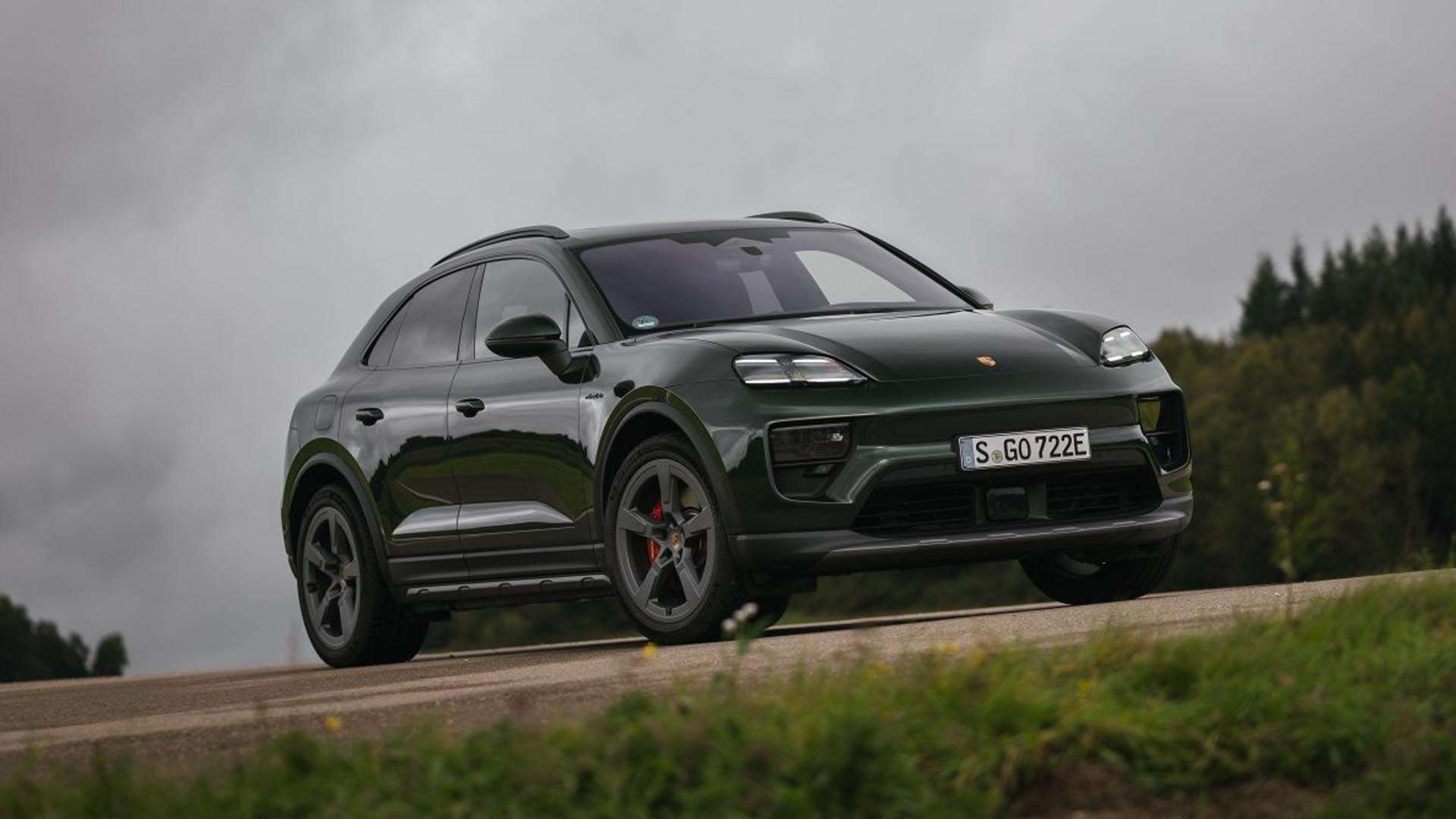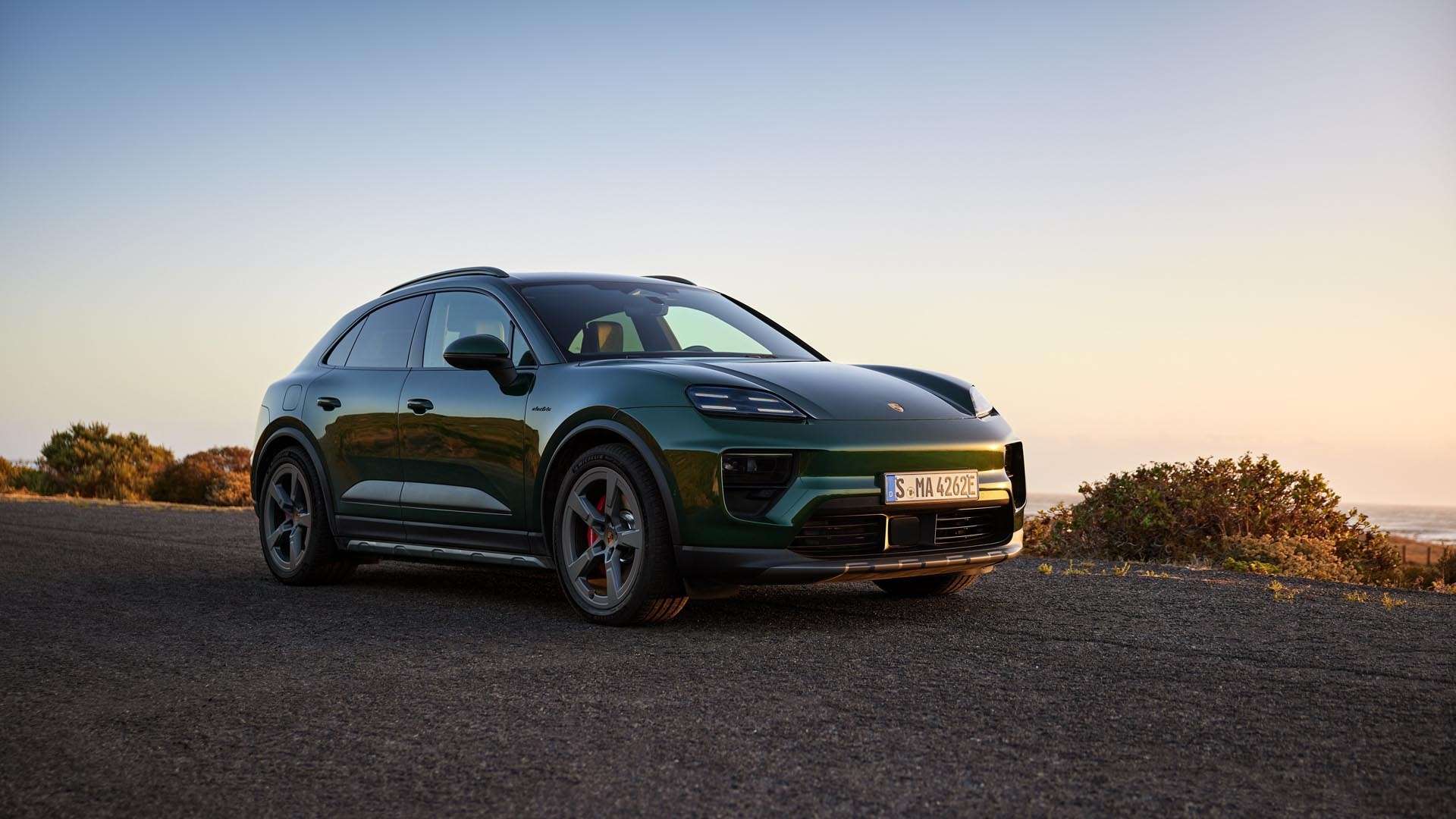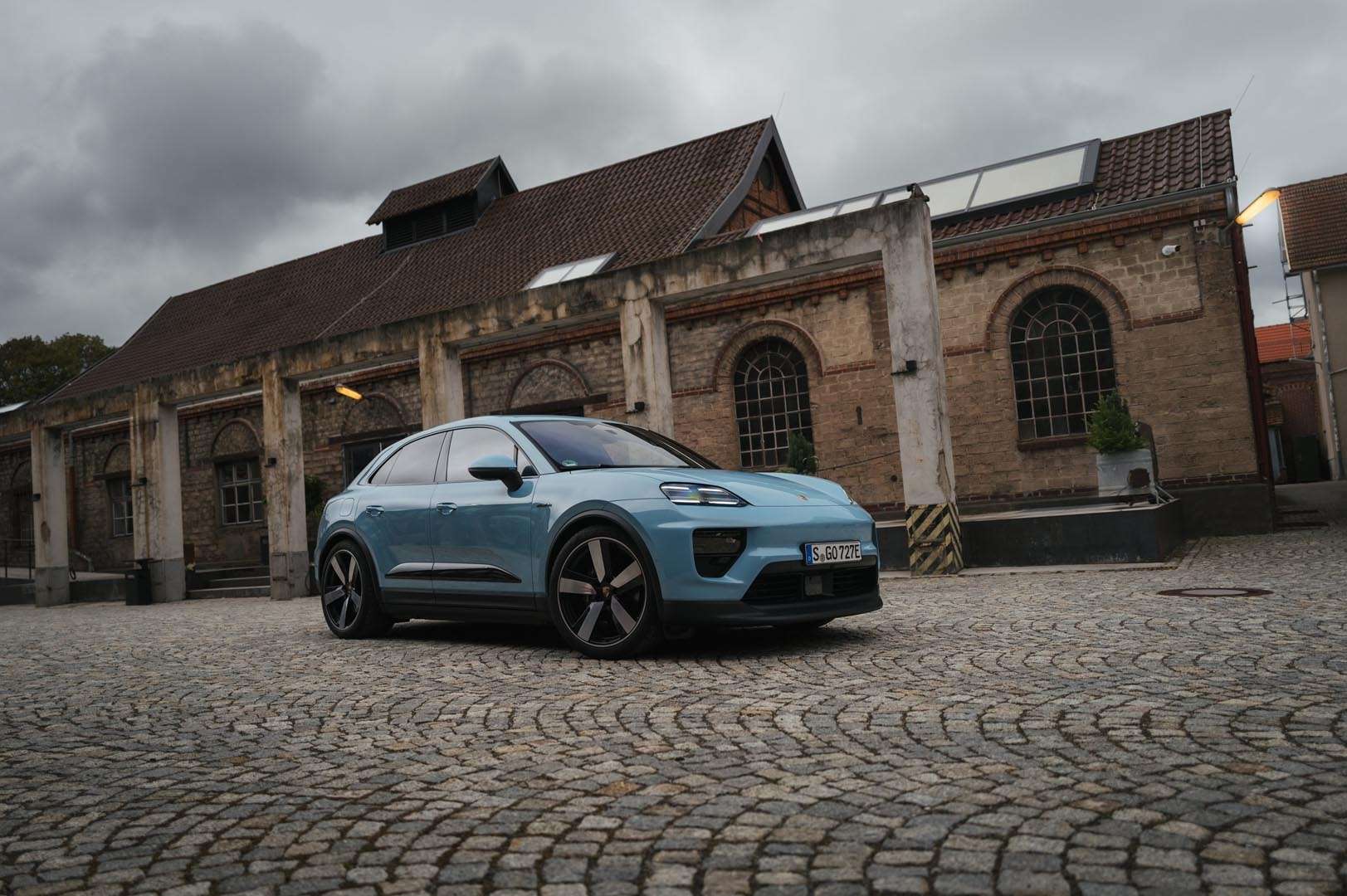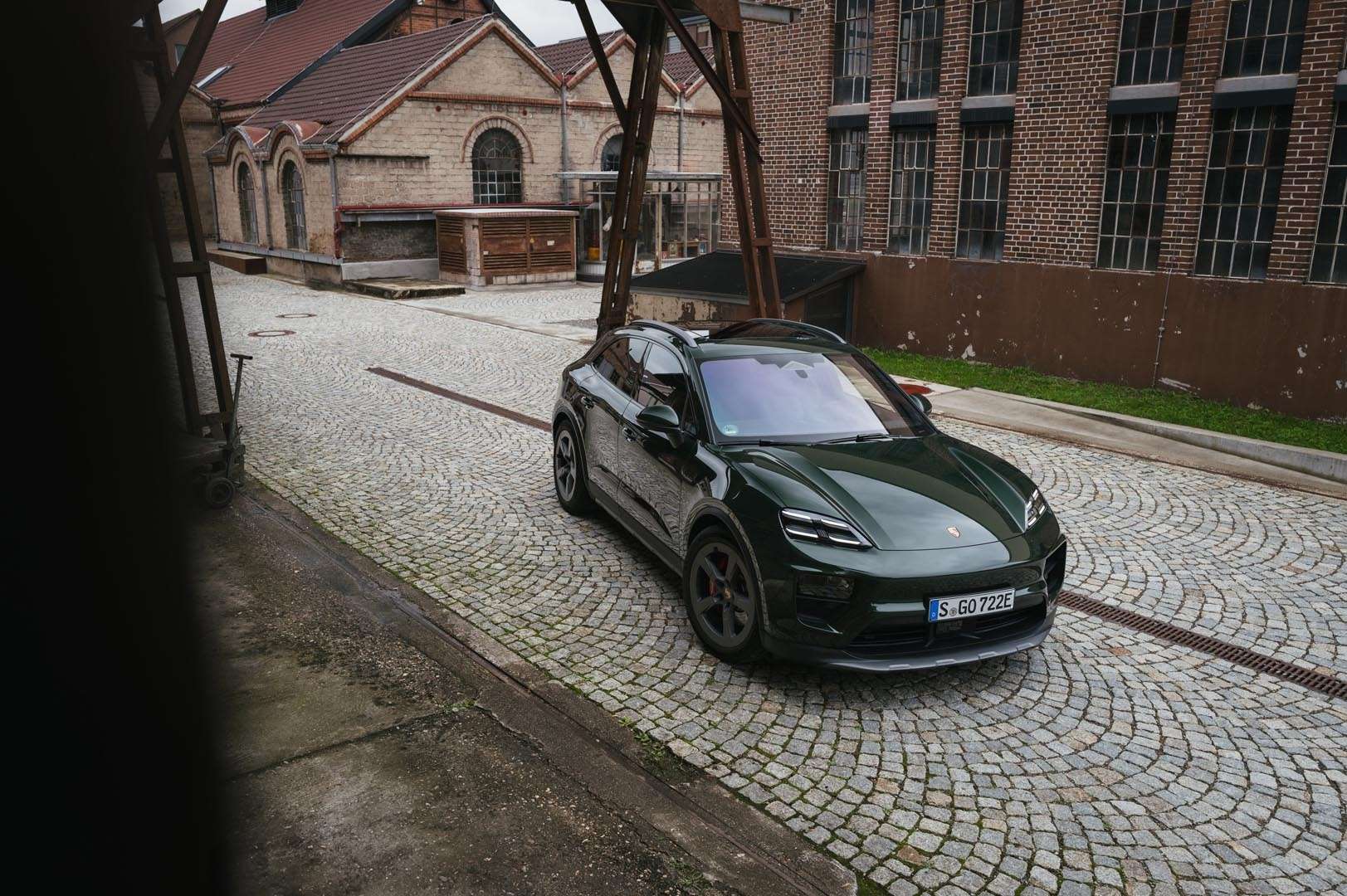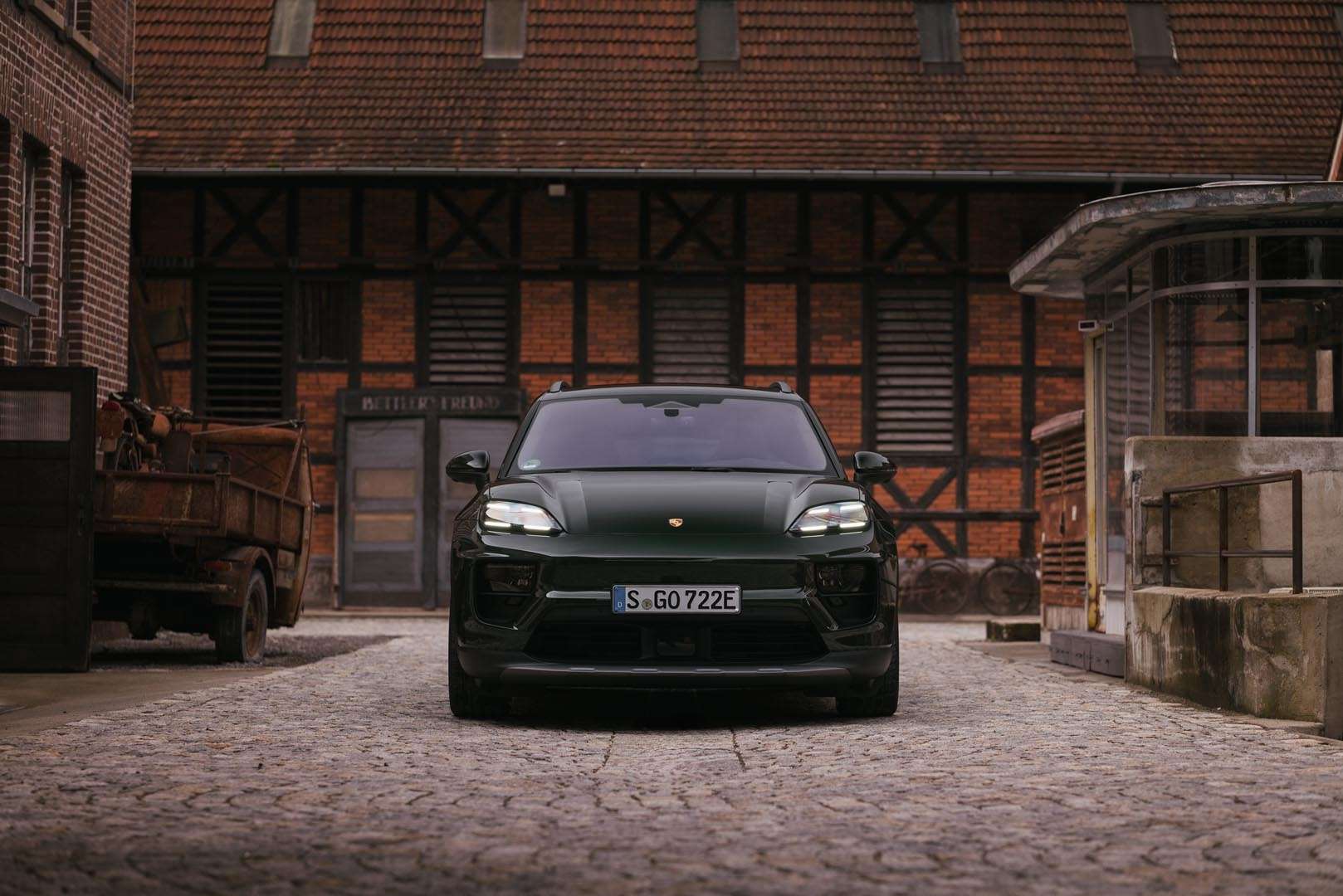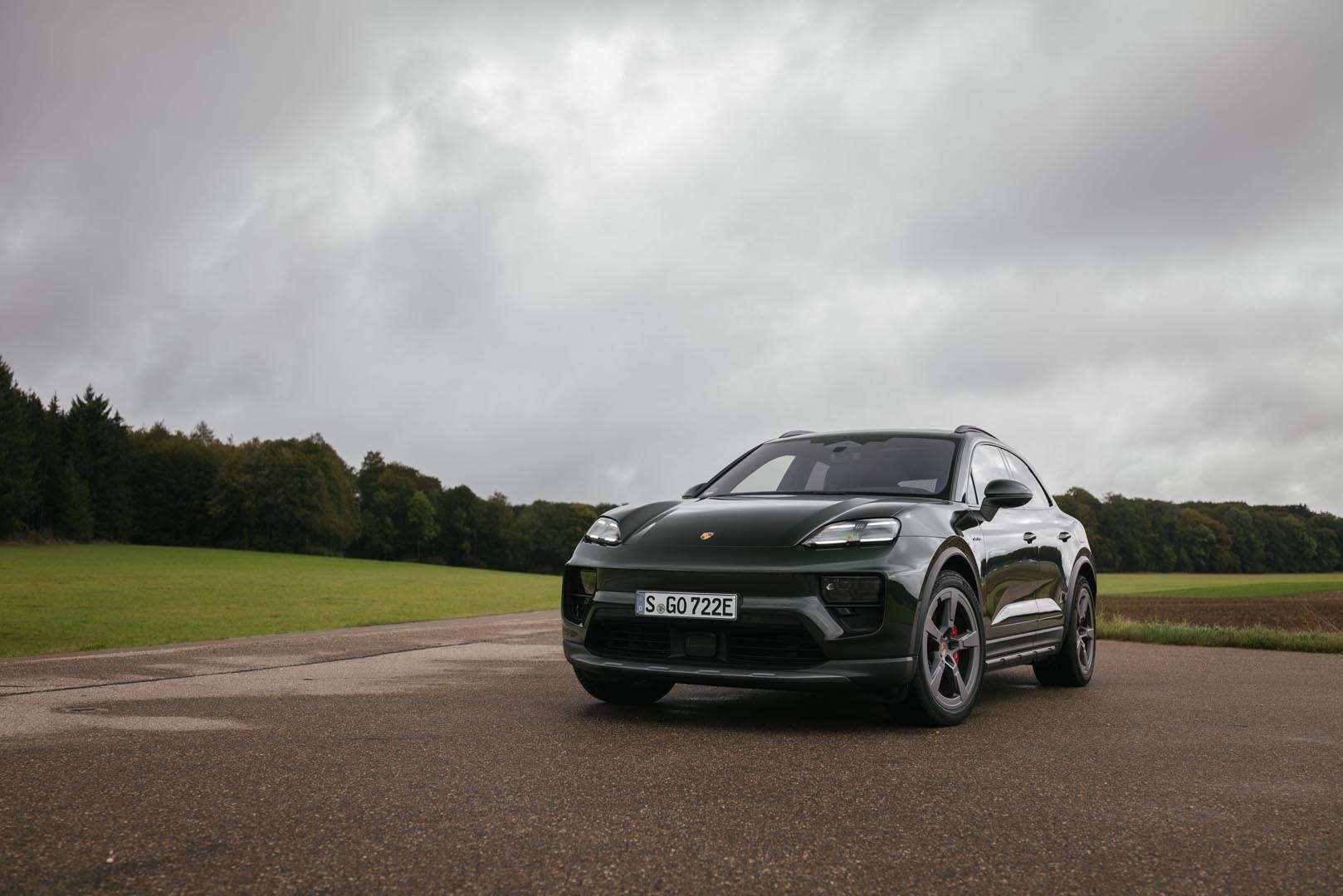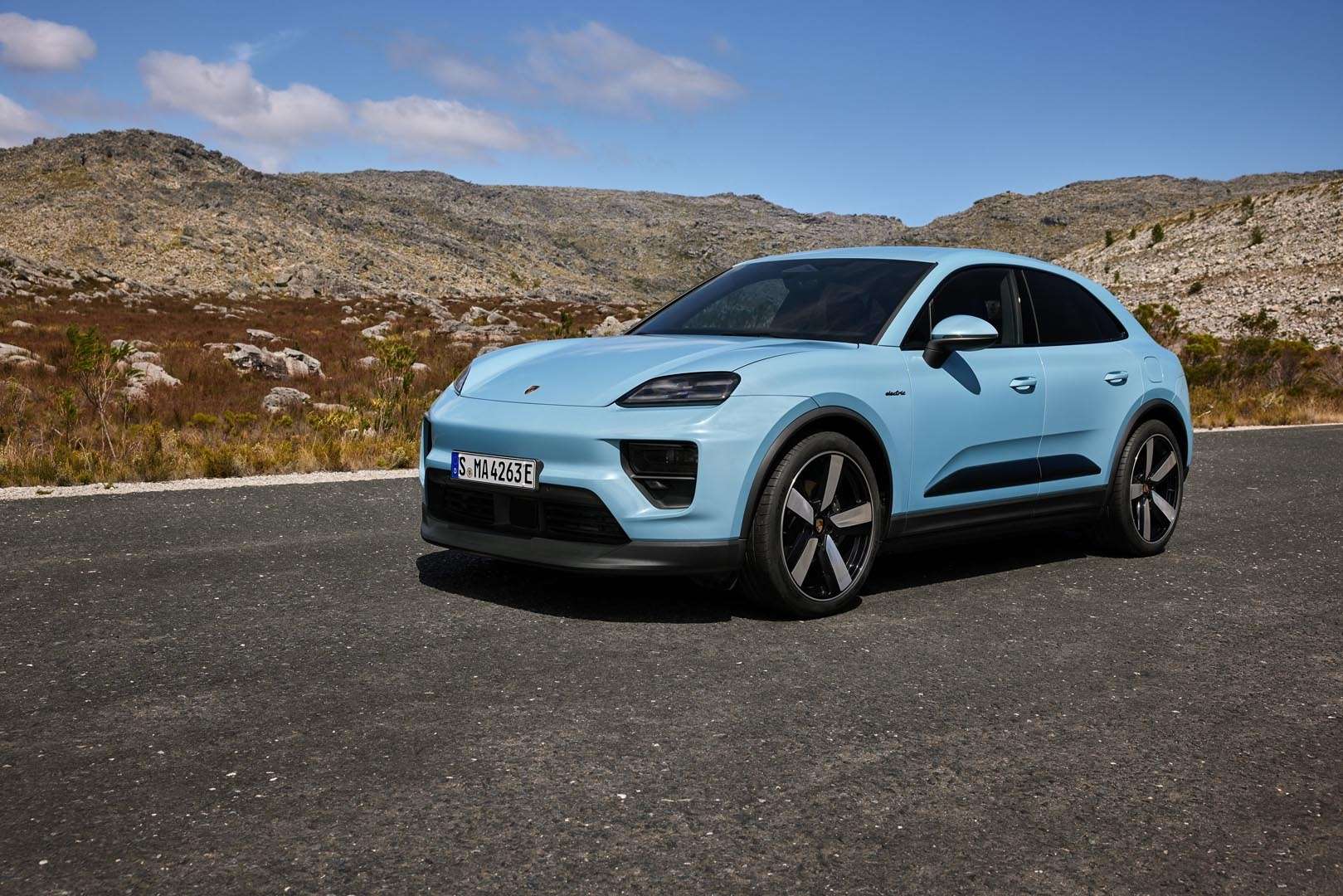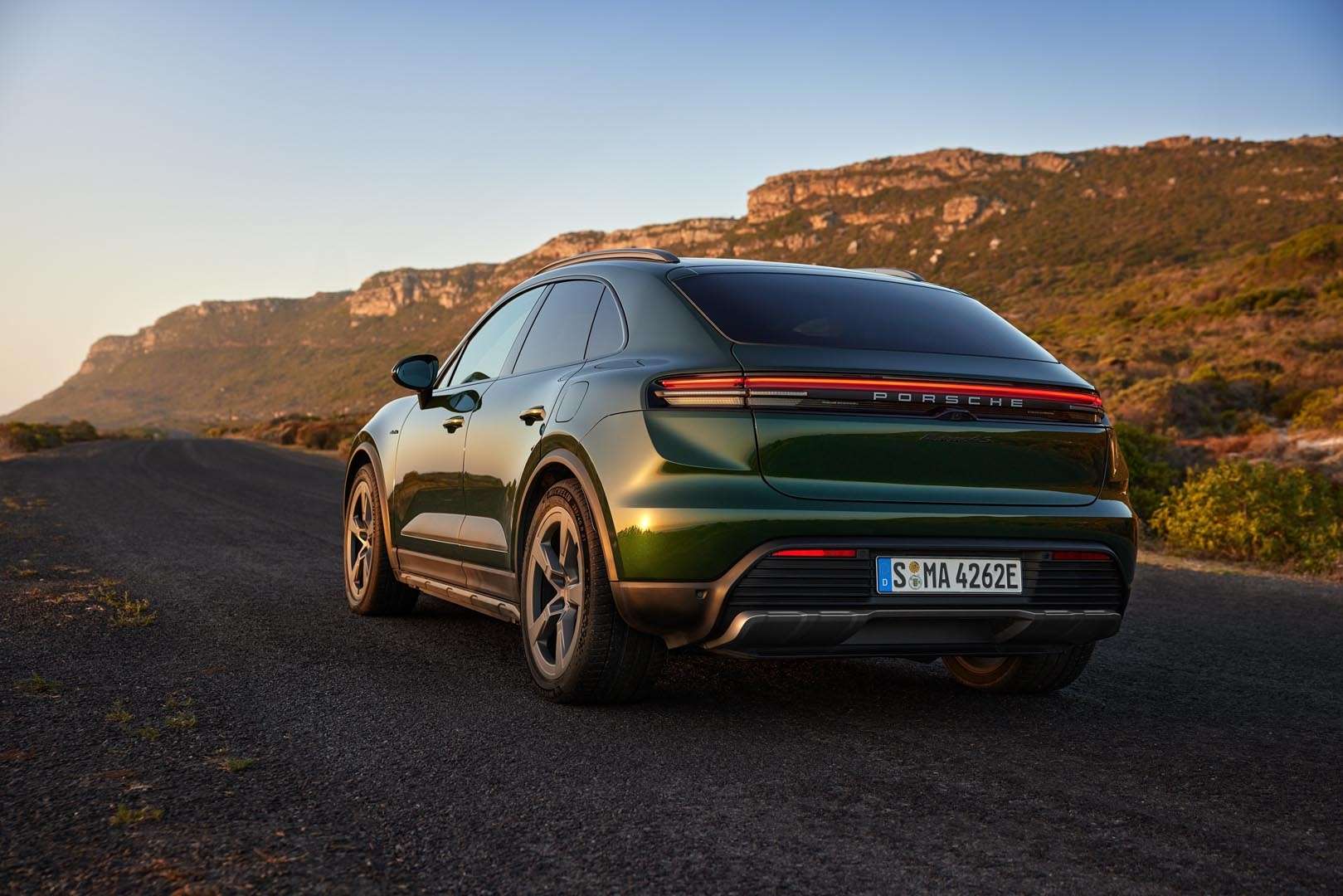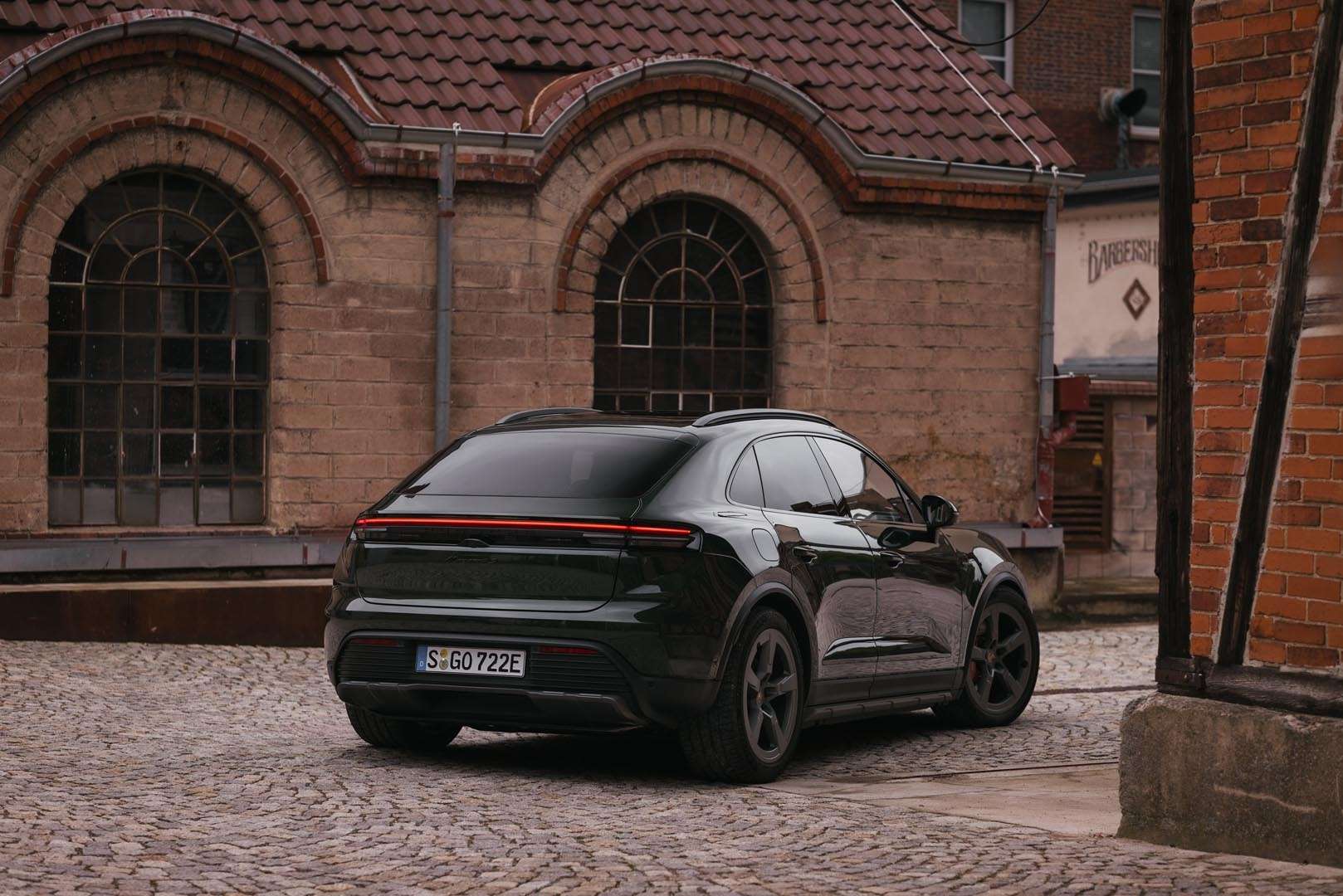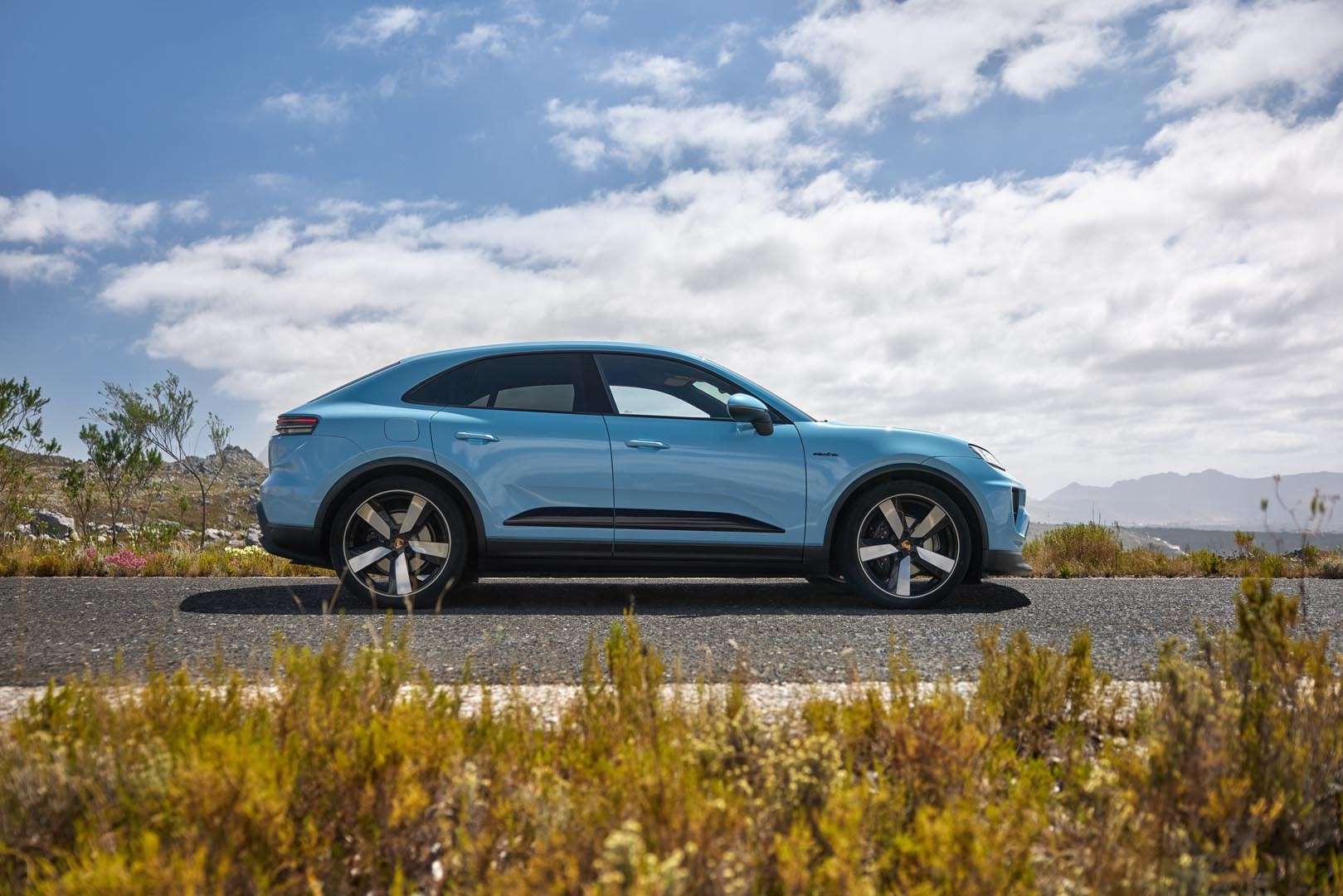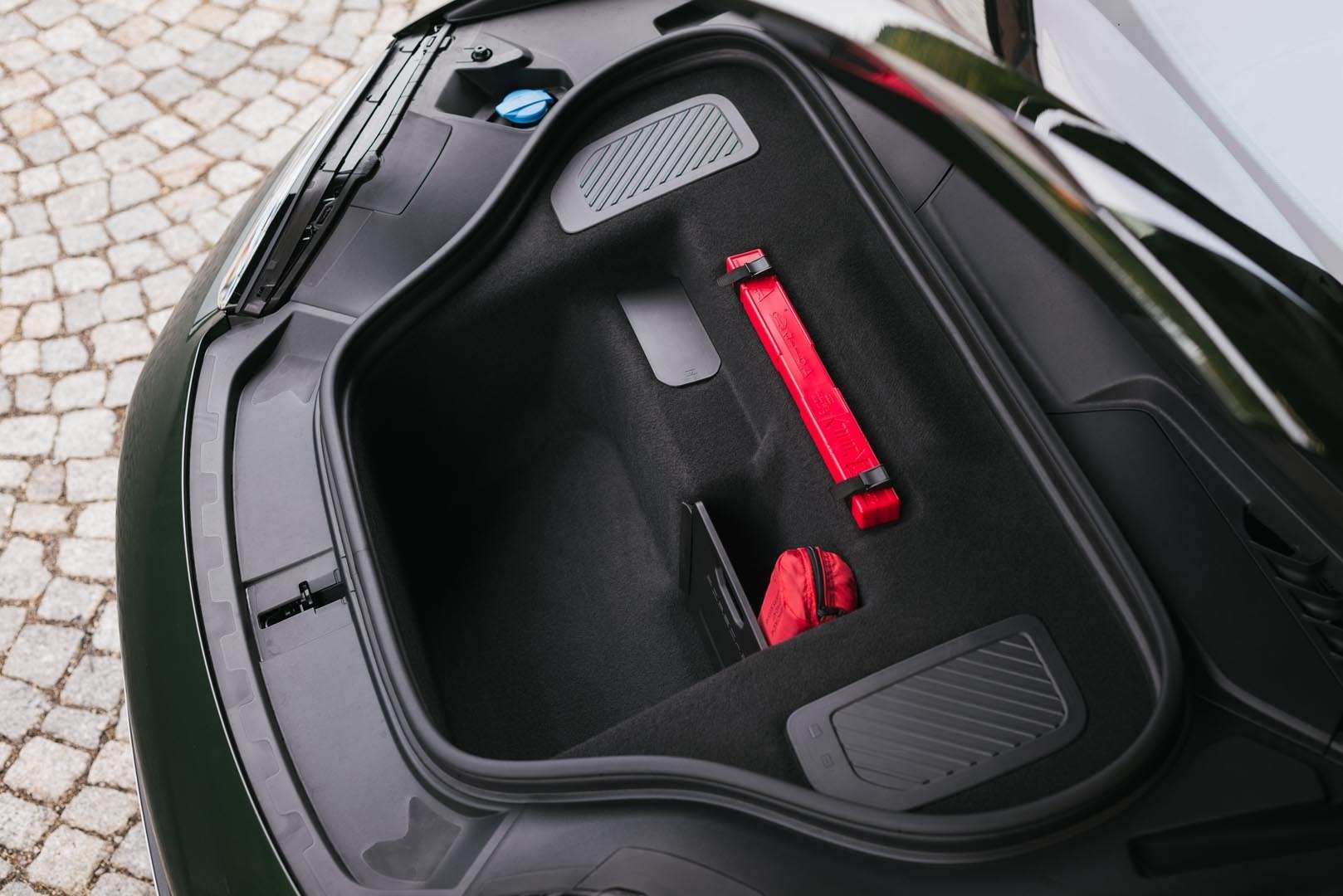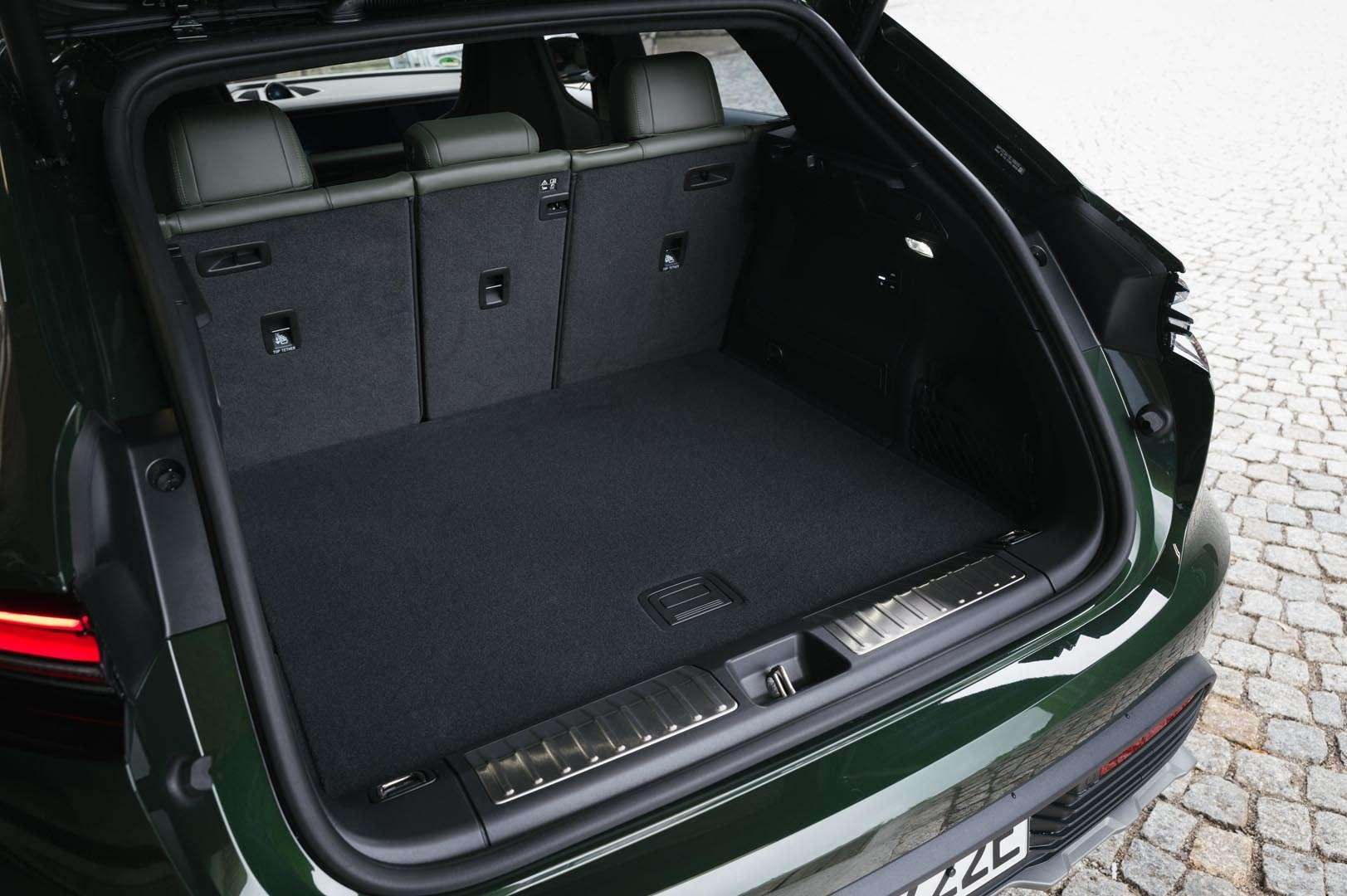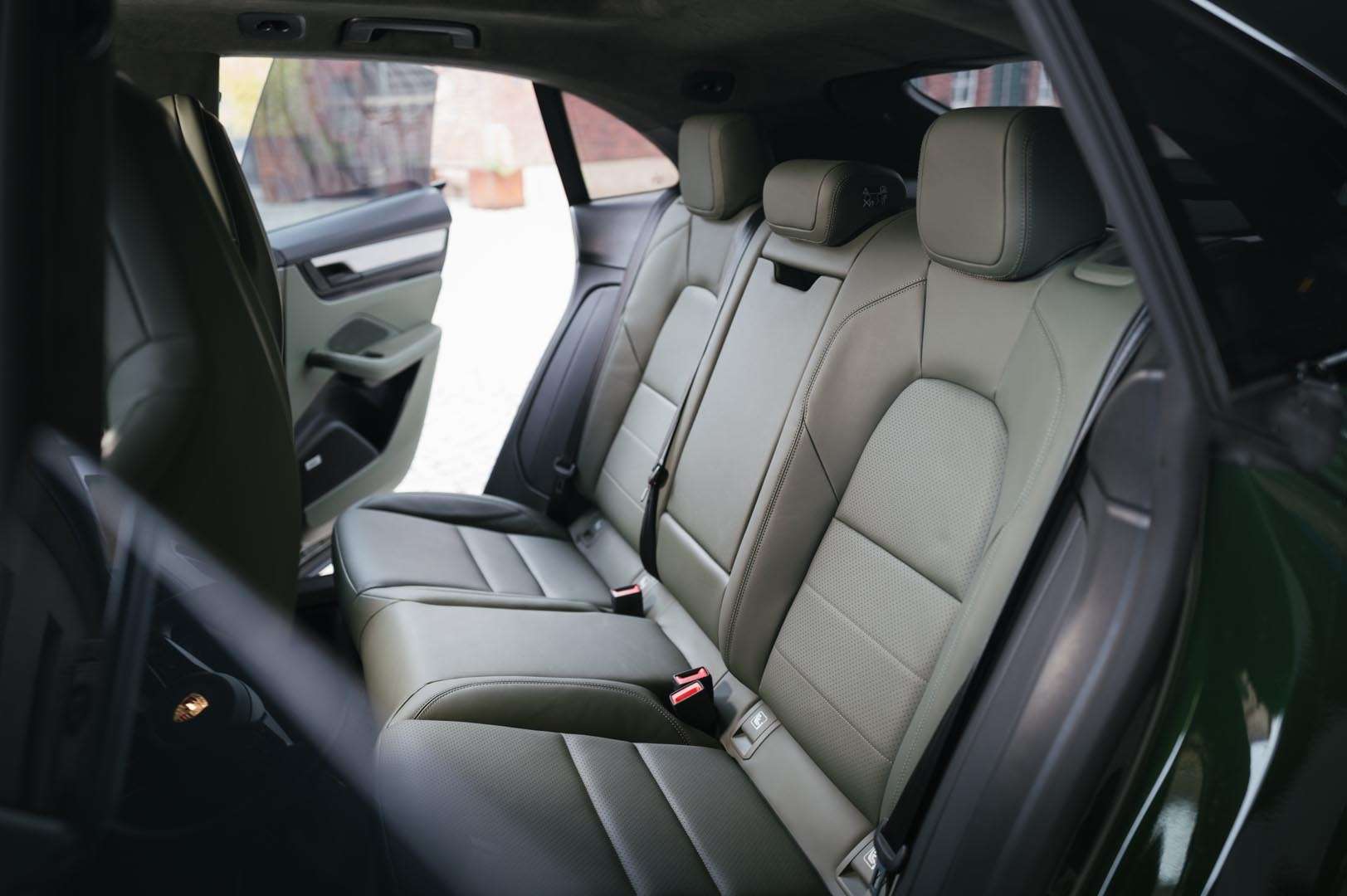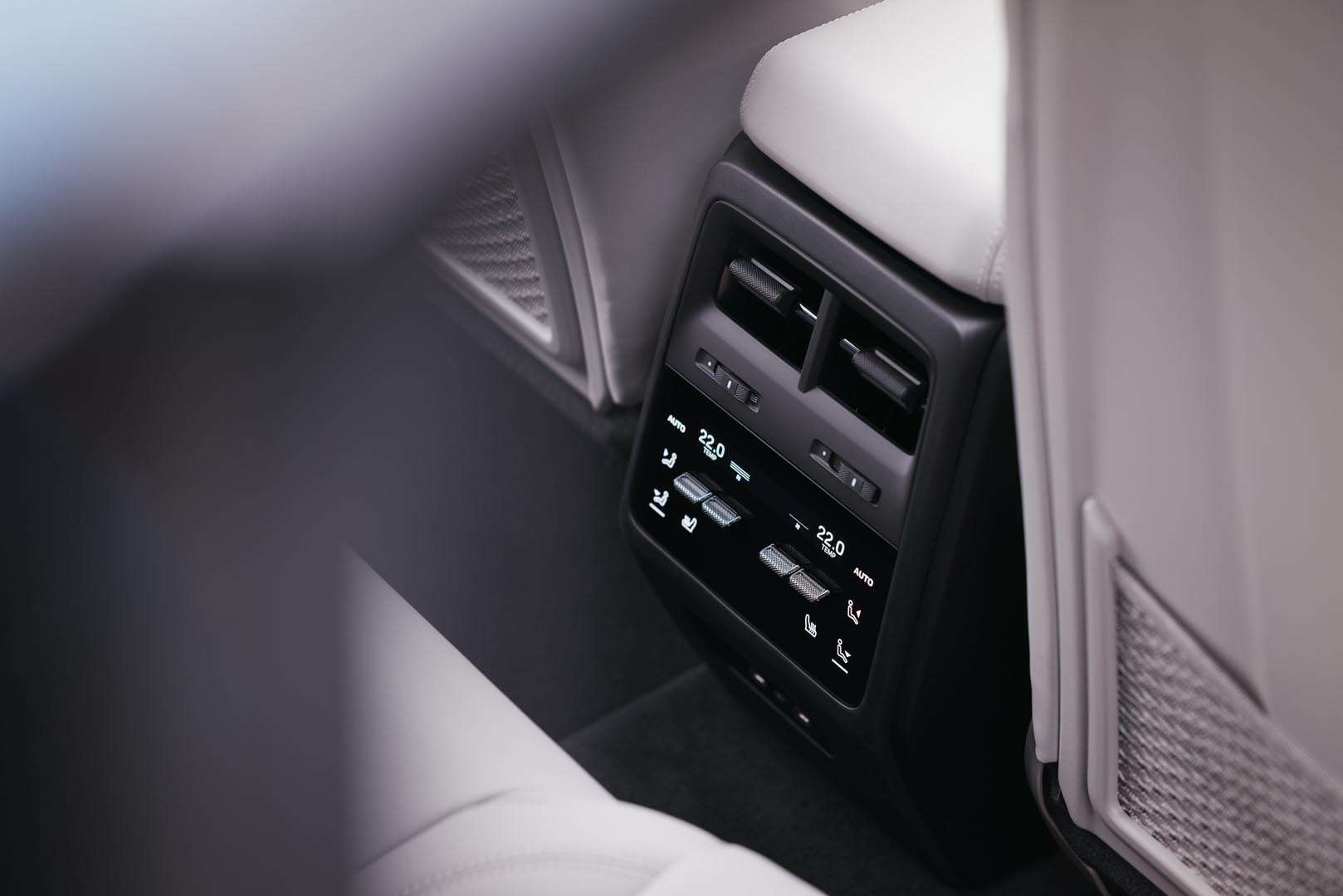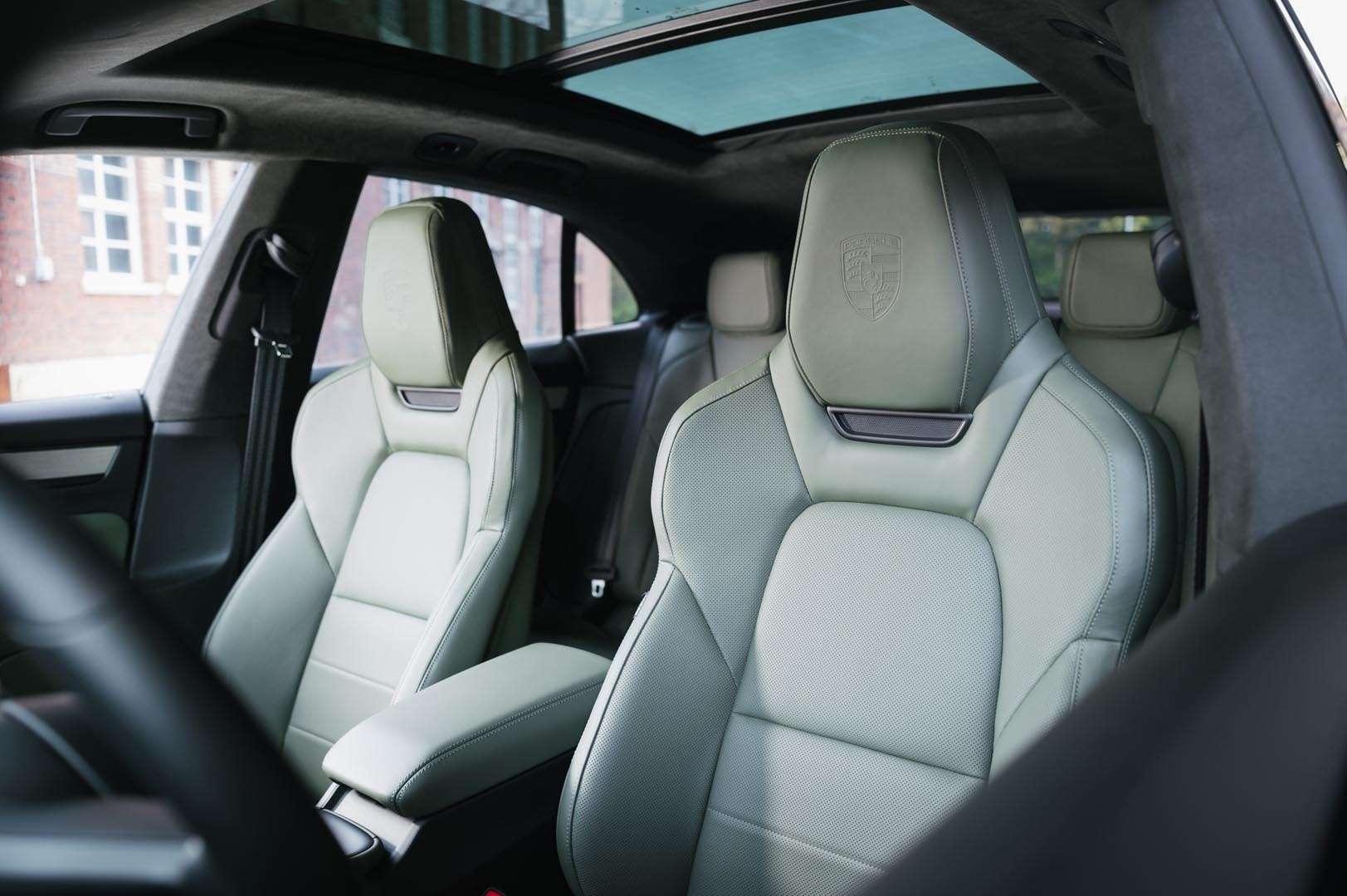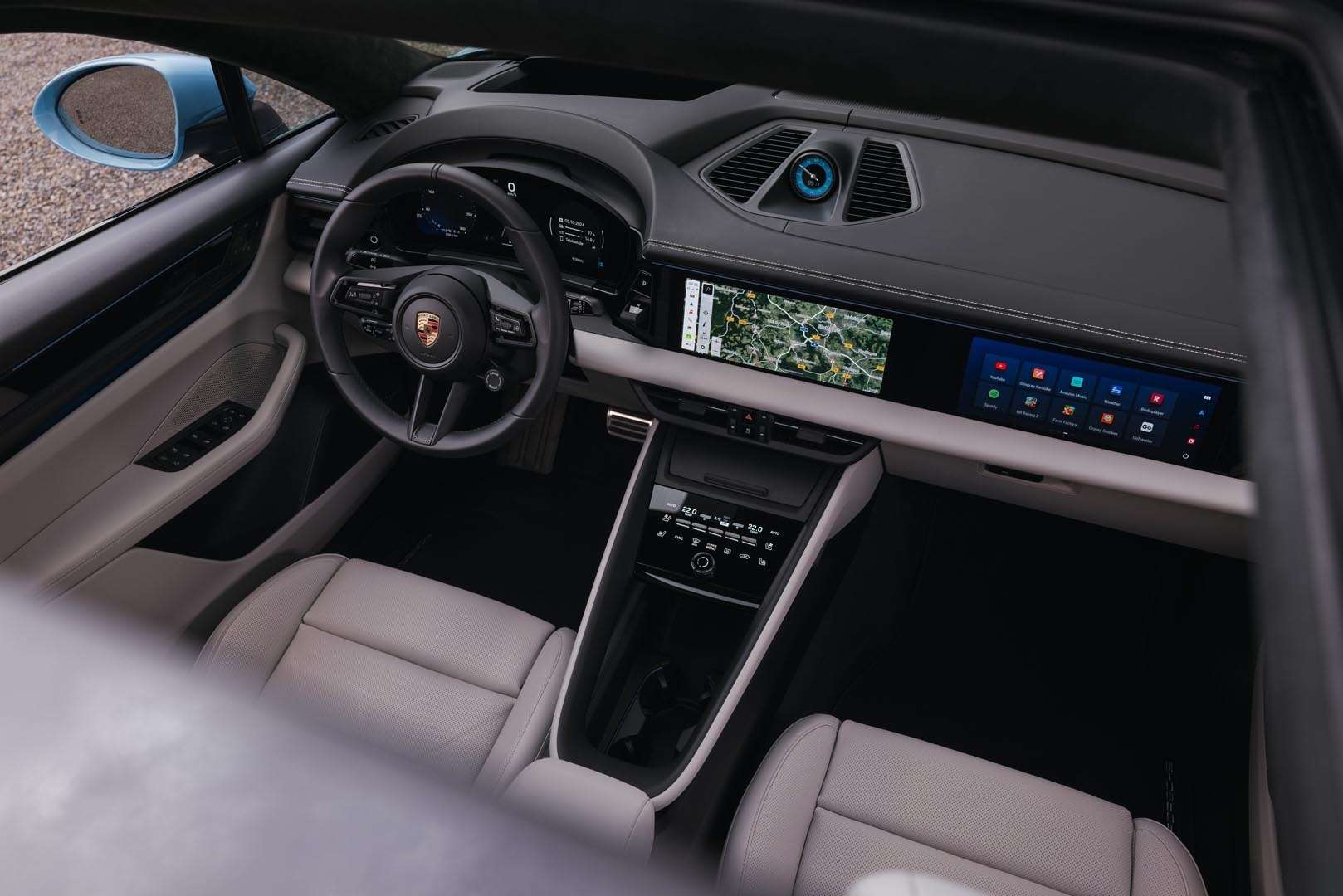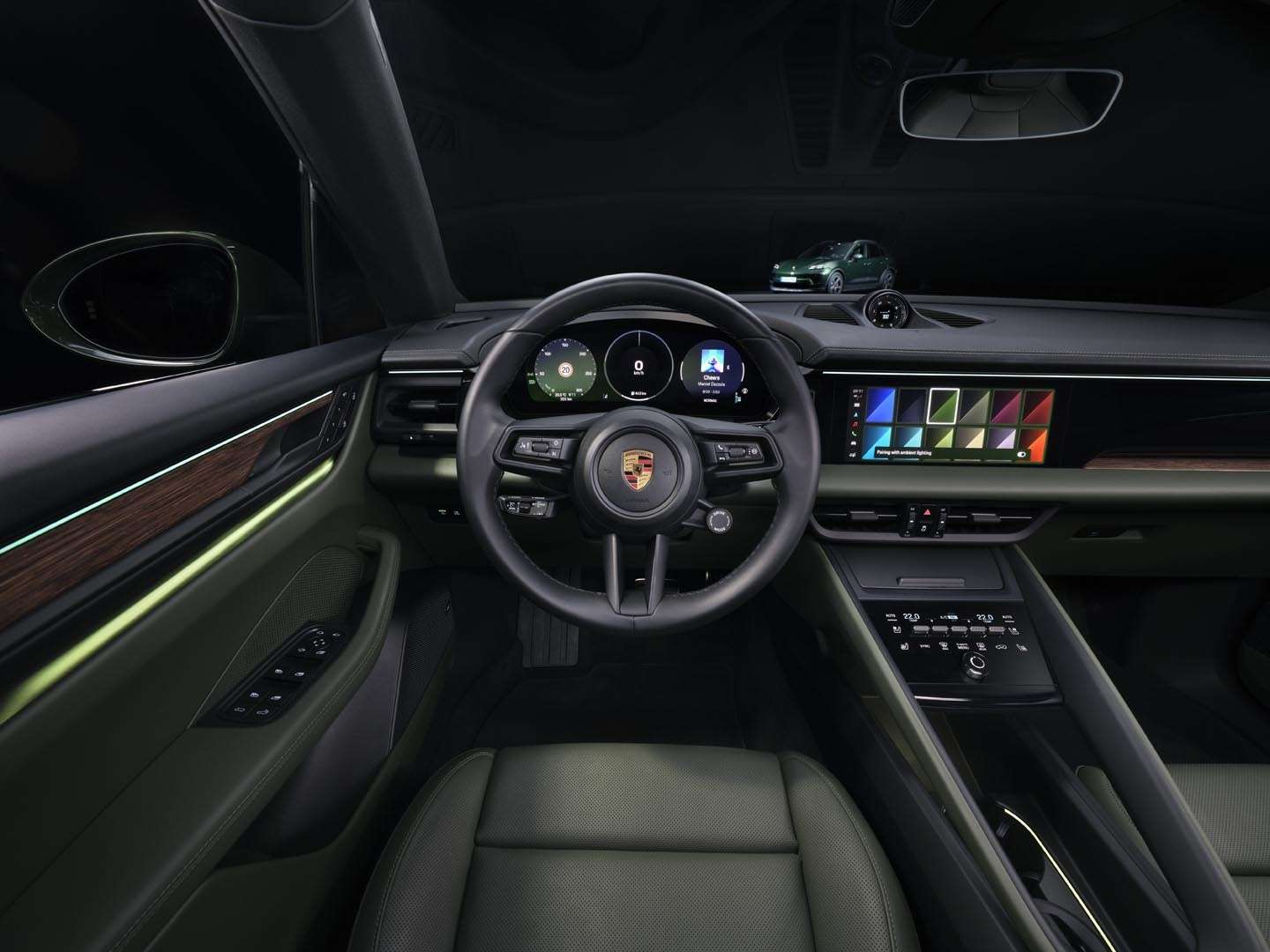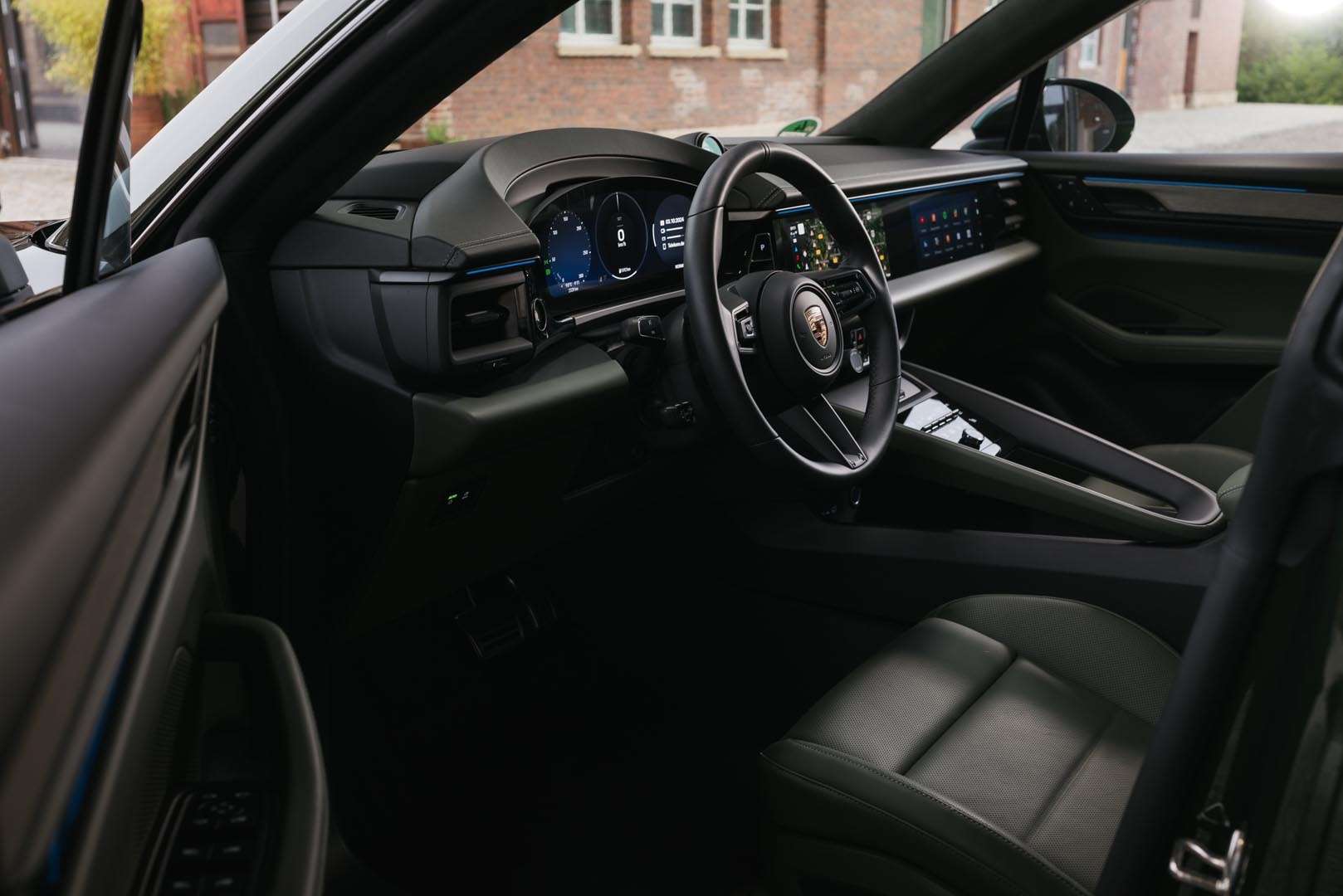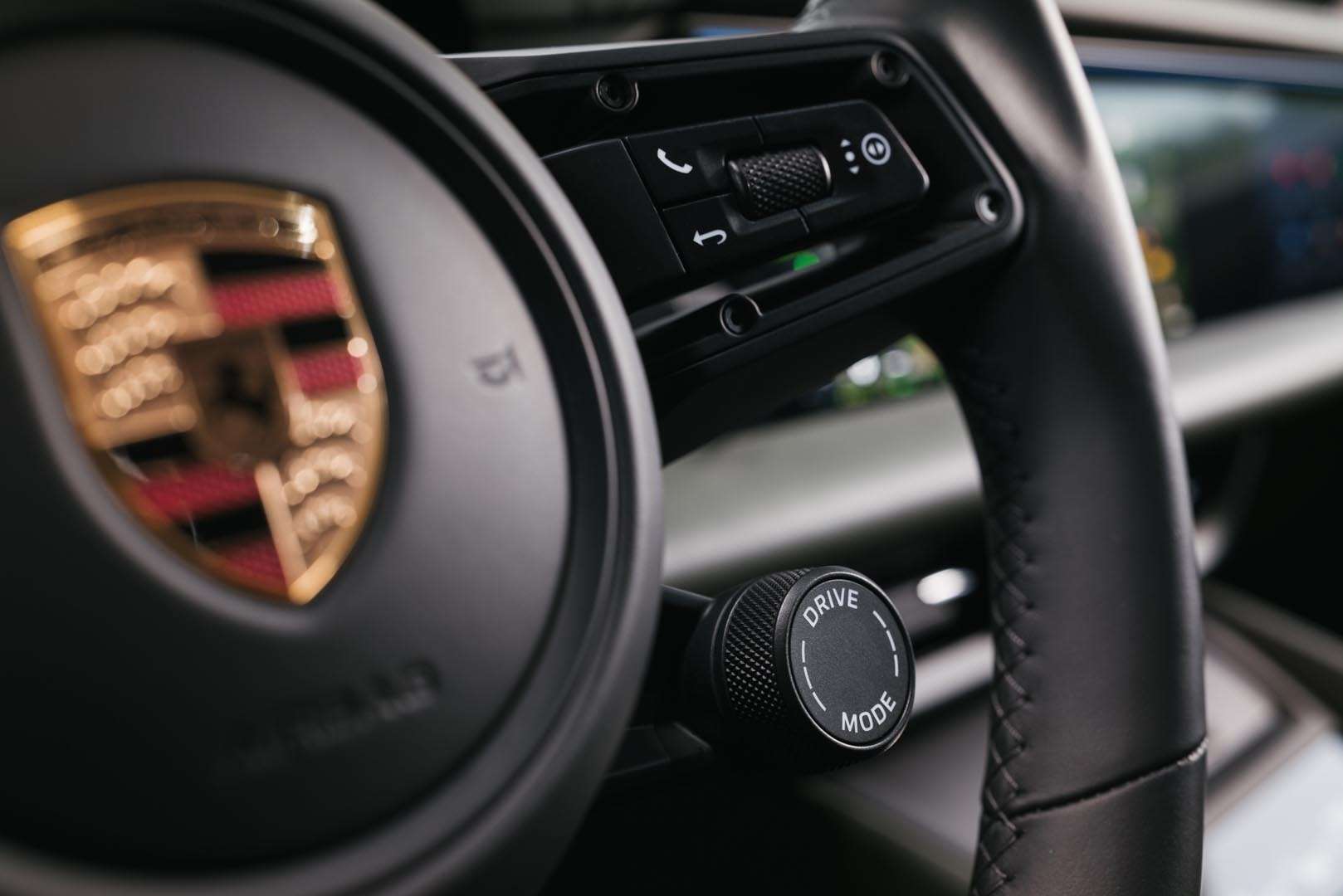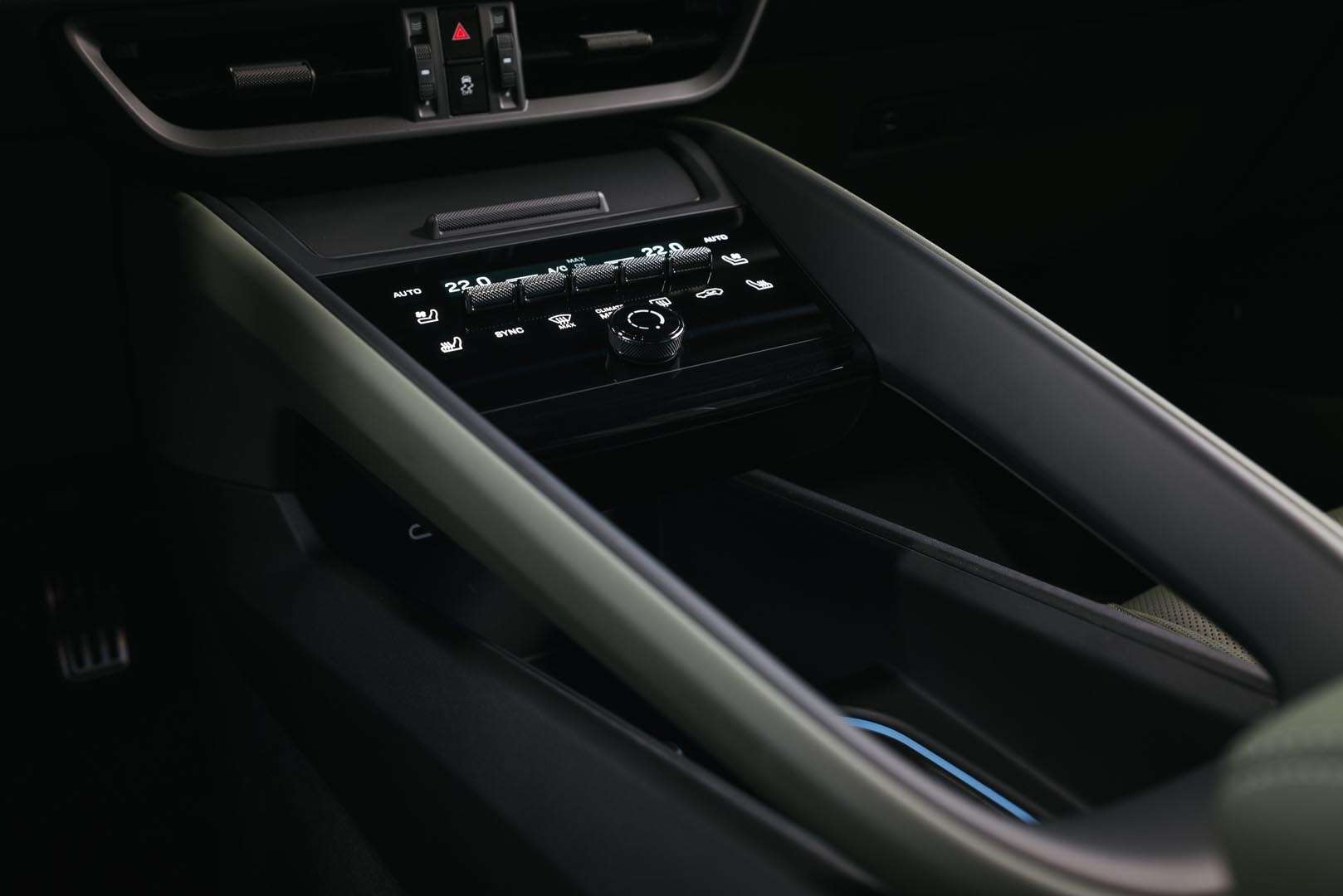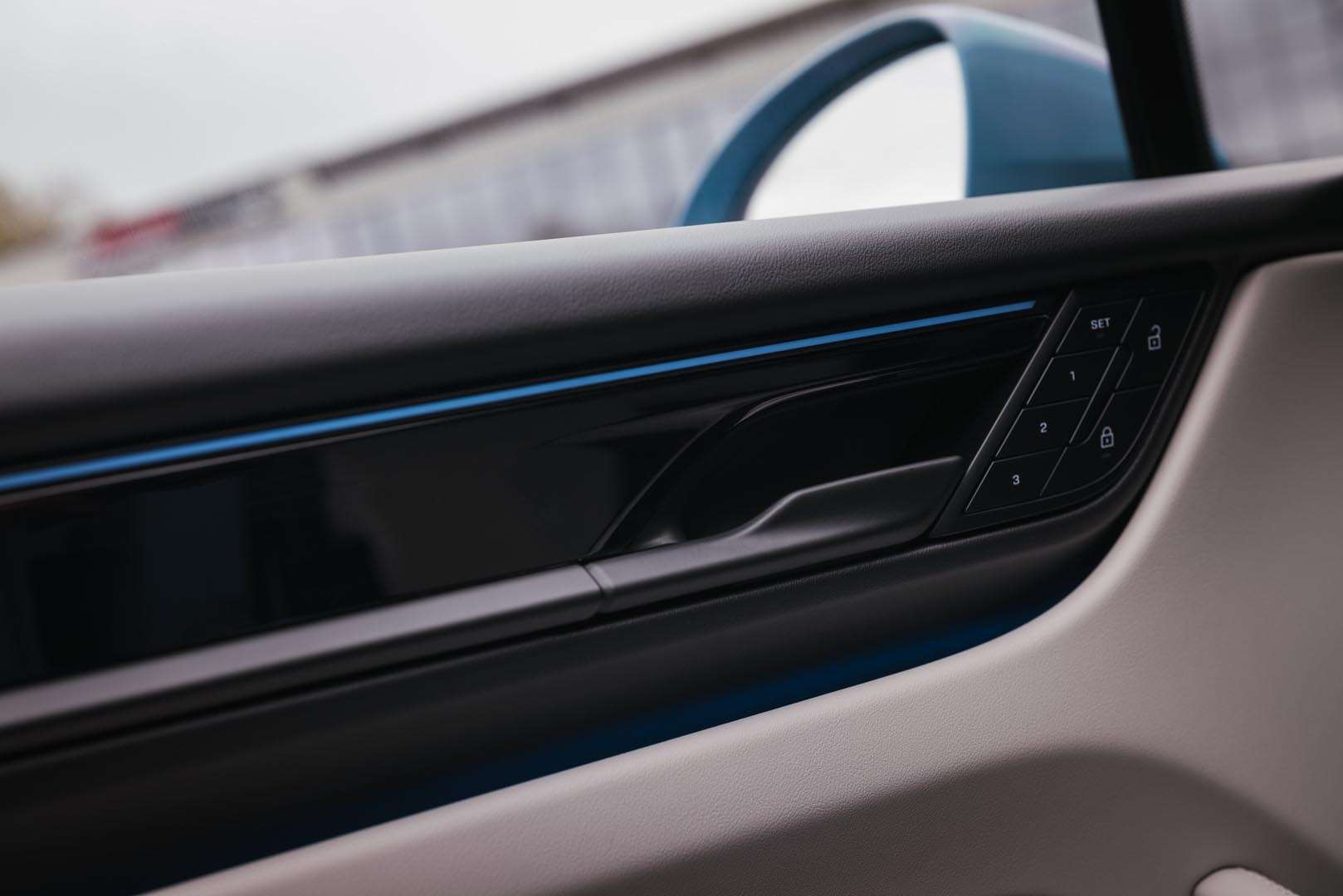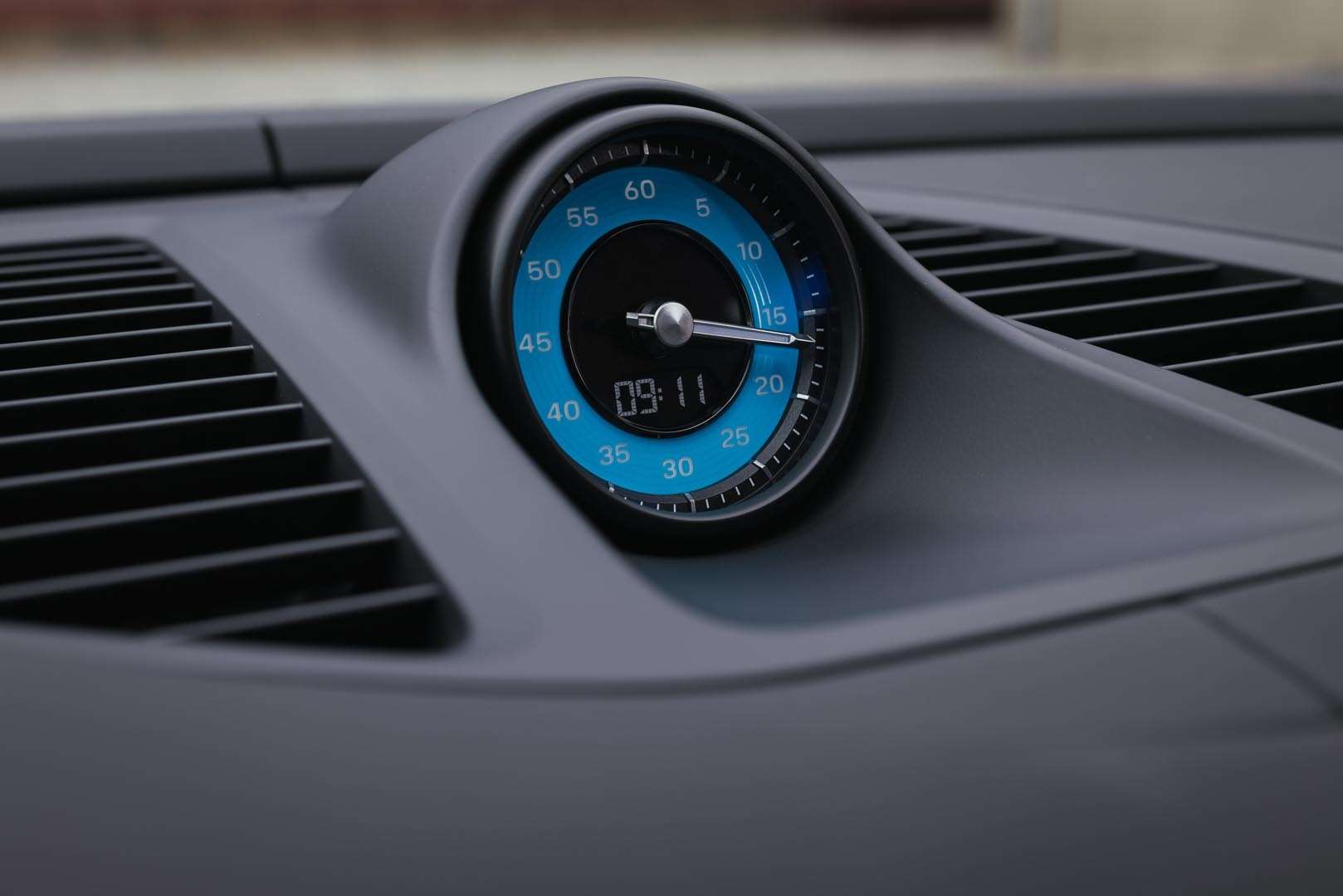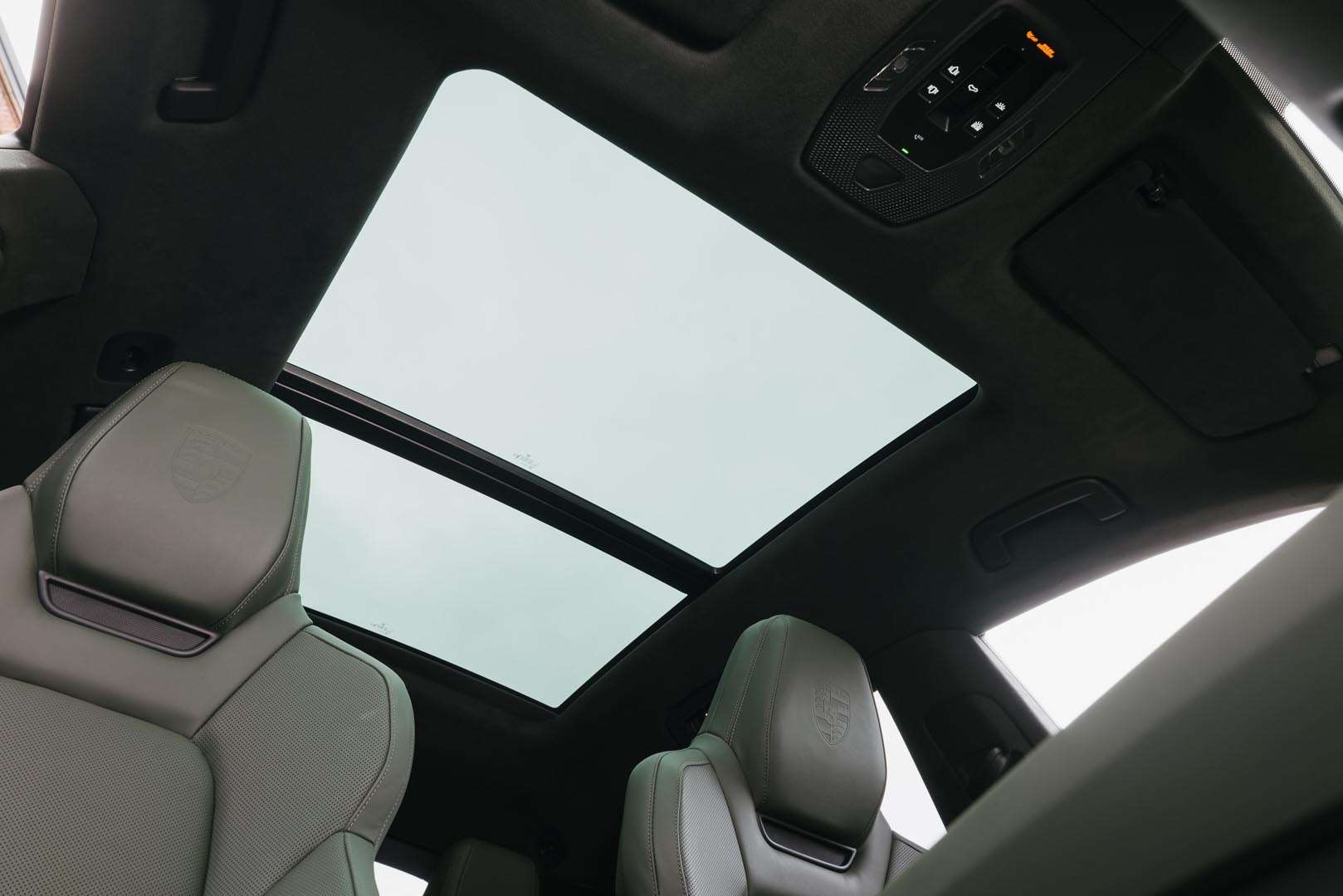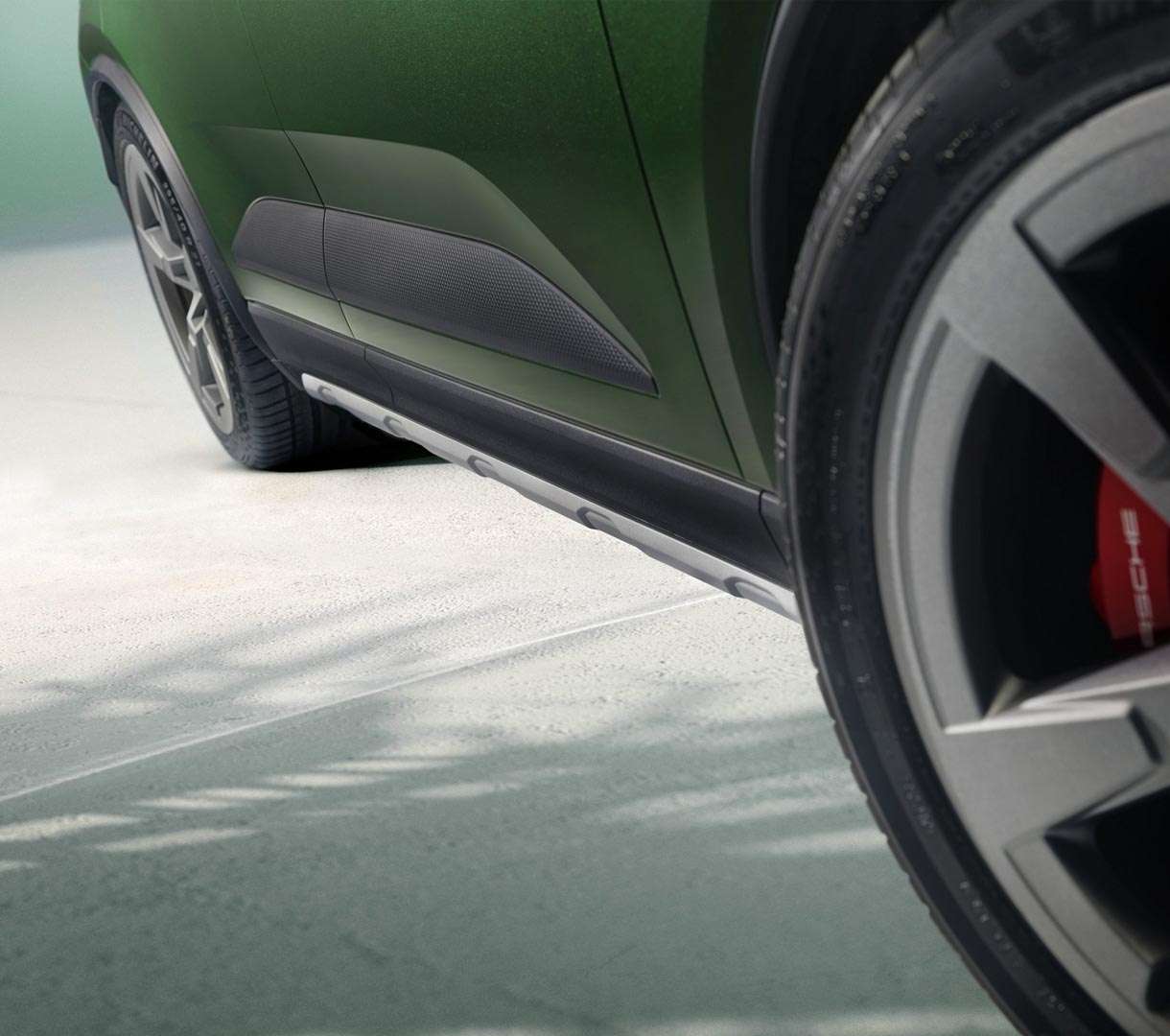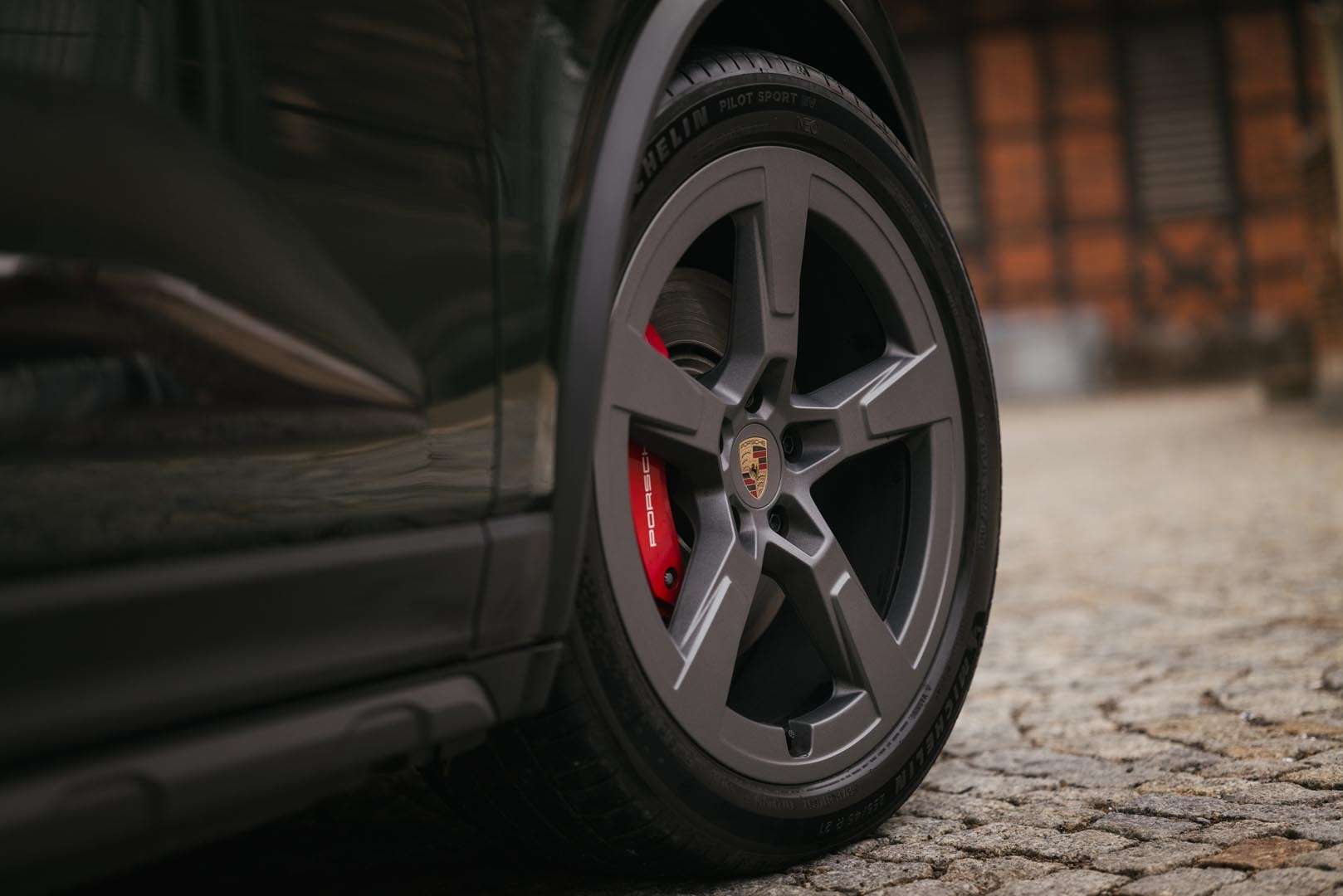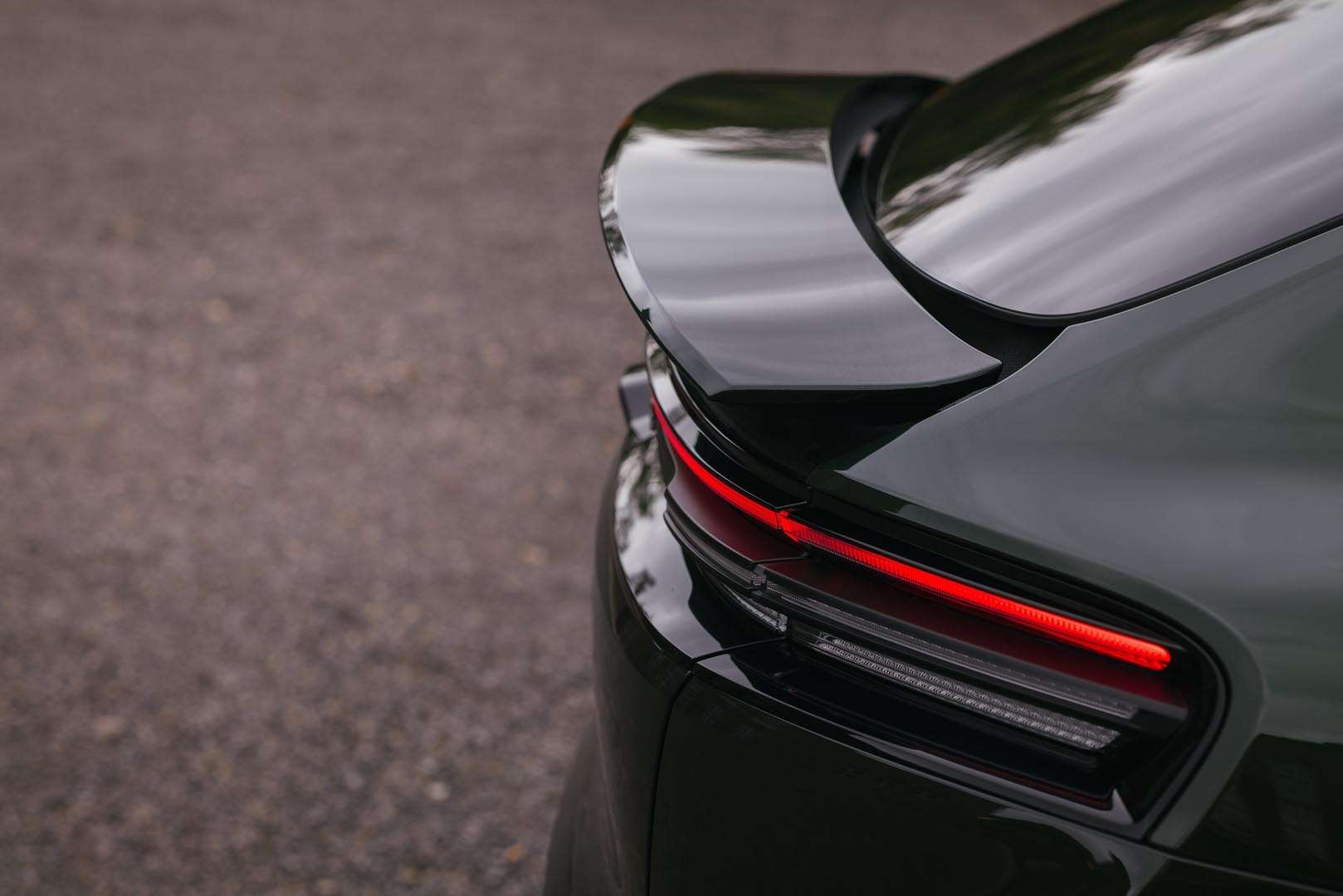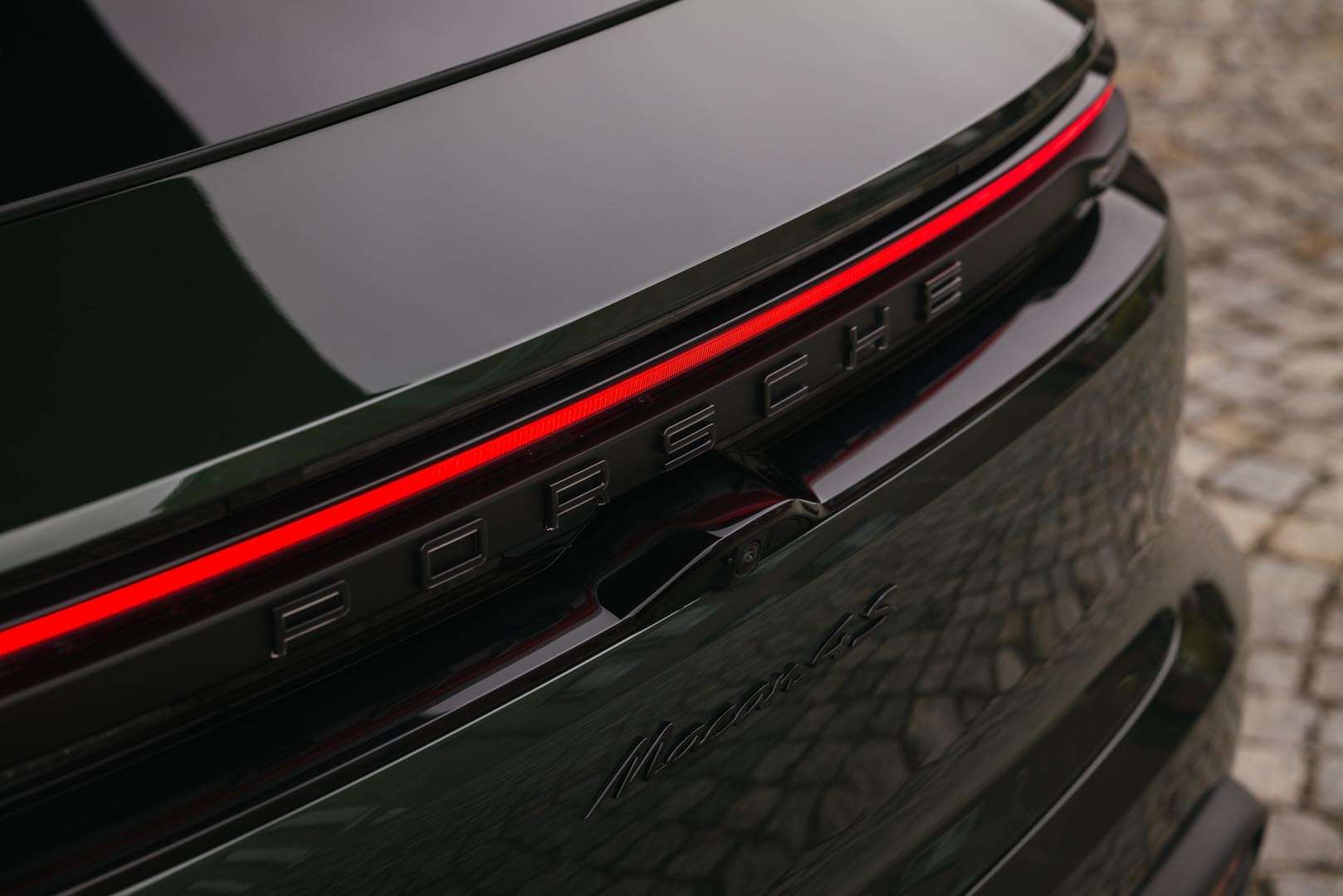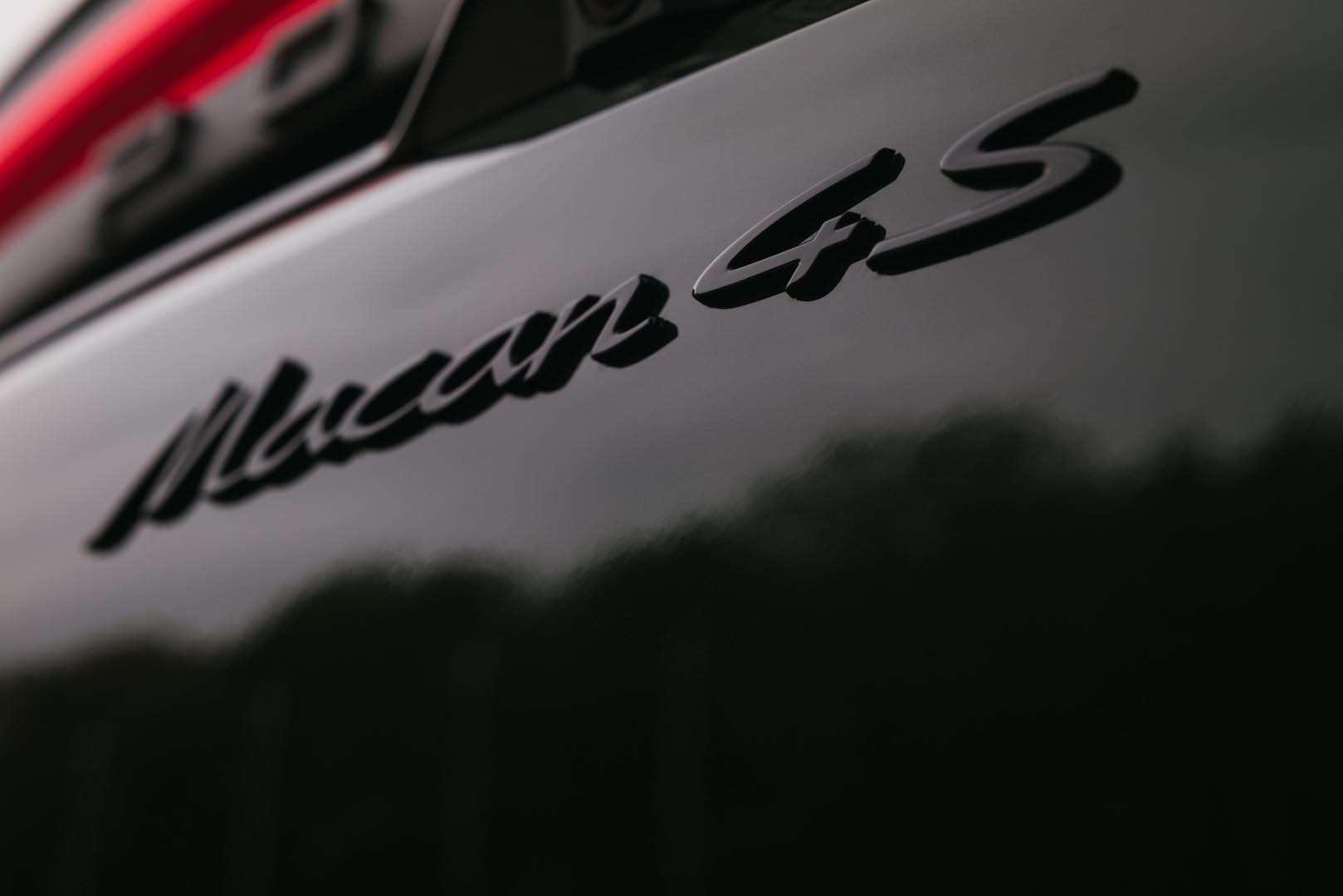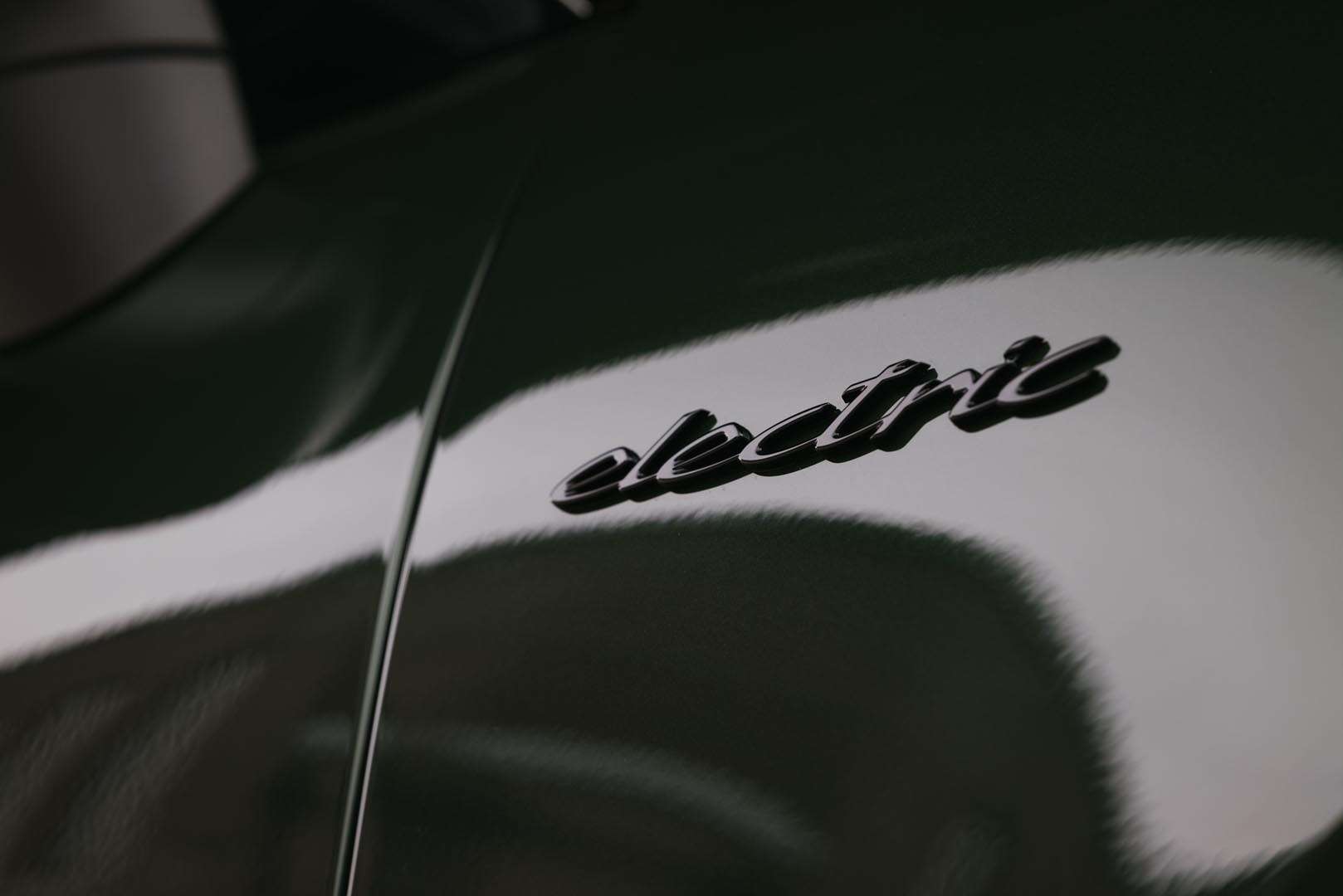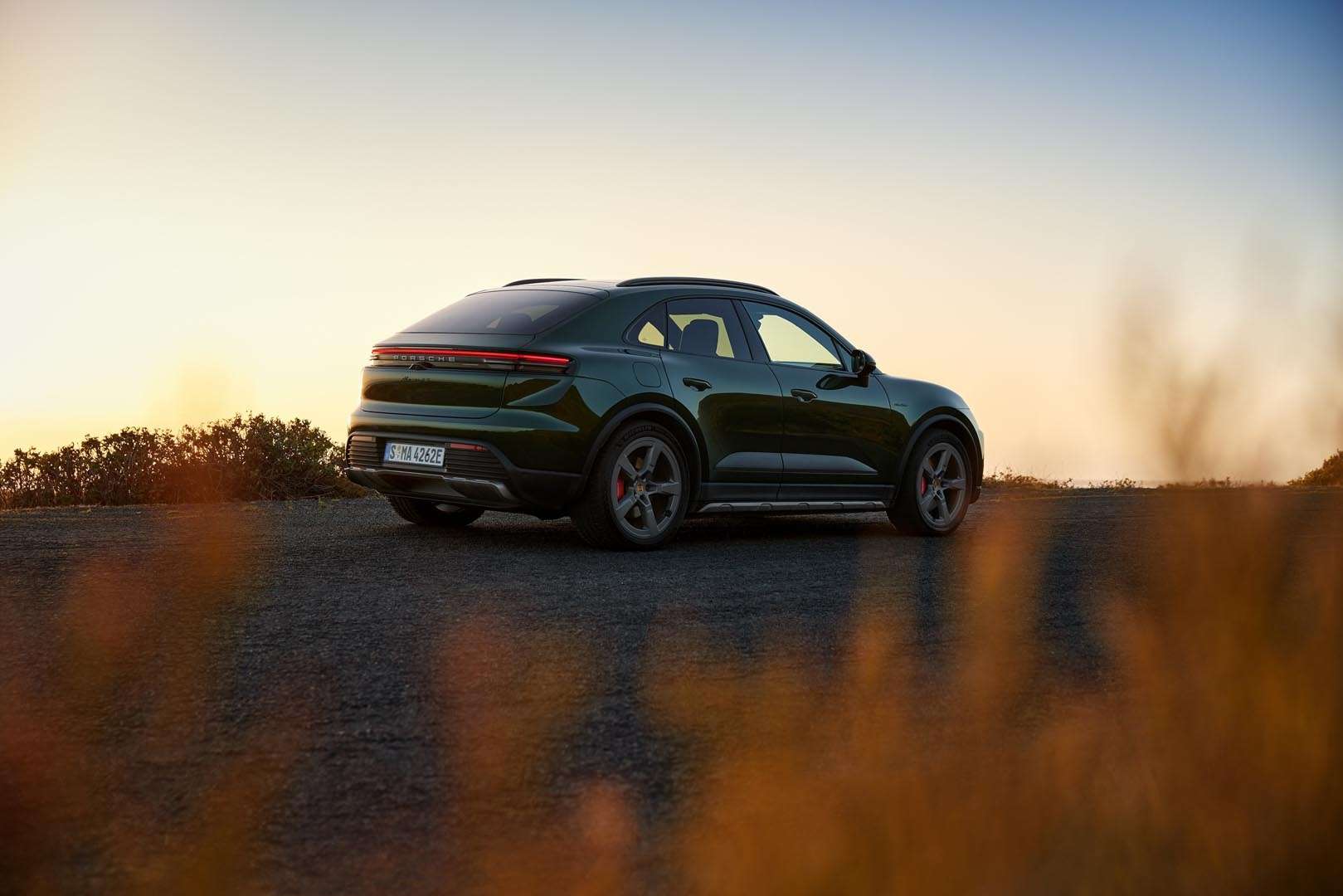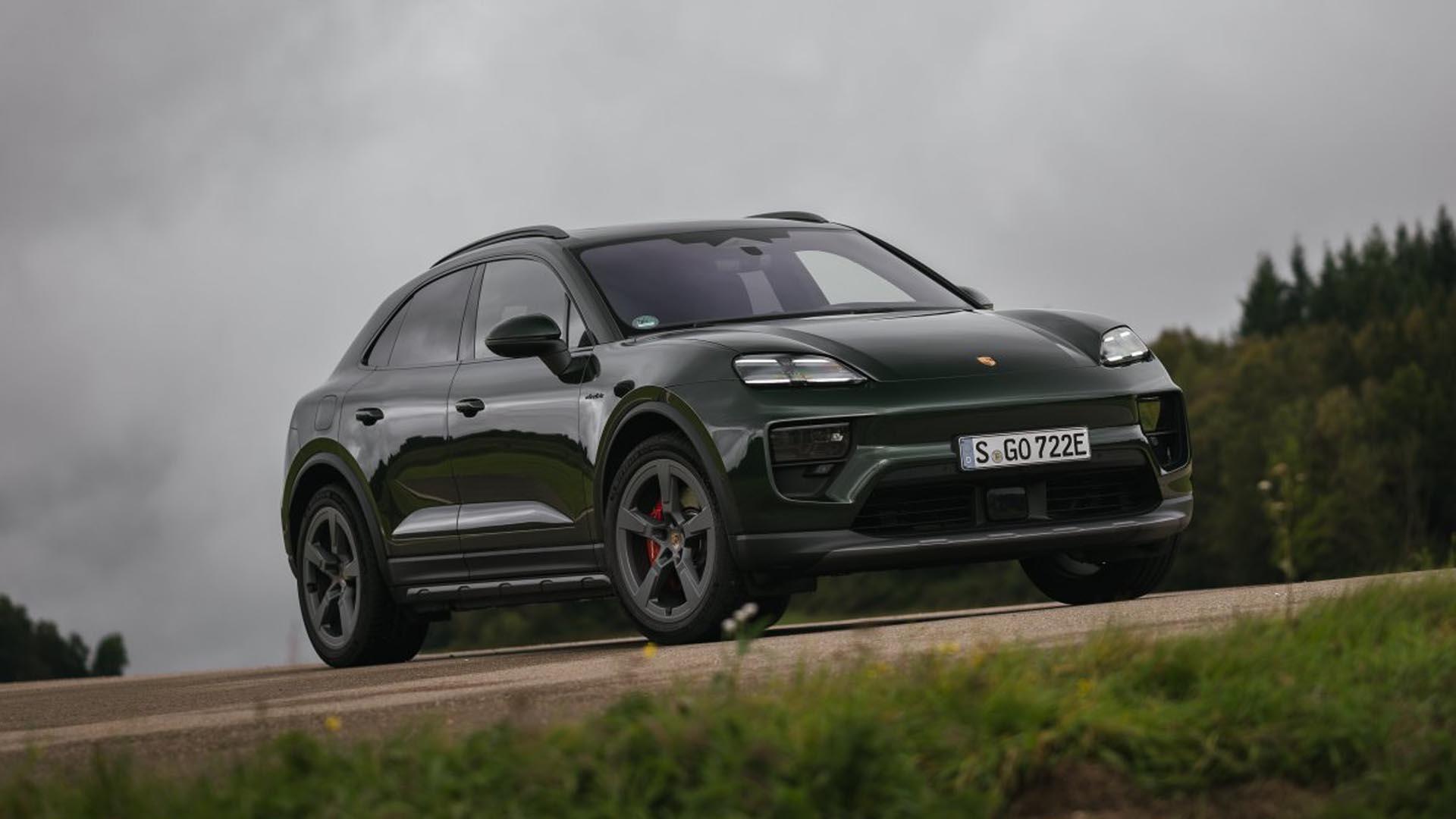
PORSCHE Macan 2026
The authentic soul of a Porsche, with fewer stops at the gas station... and a sacrificed soundtrack!
Pros and cons
Pros
- Remarkable power
- Surreal handling for its weight
- Exceptional braking
- Abundant road feel
- Very well-balanced suspension
- Body-hugging front seats
Cons
- Poor directional stability (22-inch tires and four-wheel steering)
- No one-pedal braking
- Limited cargo space for an SUV
- Overly optimistic range indicator
- Significant price premium compared to the gasoline model
- Options expensive and unavoidable
Overview
Porsche announced the upcoming arrival of a fully electric Macan in the early 2020s. At the time, the manufacturer had planned that this model would simply replace the gasoline-powered versions of its best-selling vehicle.
But that won't happen, at least not for now. Just a few months after the launch of the Macan Electric in early 2025, the Stuttgart-based automaker announced that a new generation of the internal combustion engine Macan would arrive around 2028—a full 14 years after the original model's introduction.
Until then, purchasing the electric version remains the best way to drive Porsche's most up-to-date compact SUV. It's also the second vehicle from the Volkswagen Group to use the latest PPE (Premium Platform Electric) platform, after the Audi Q6 e-tron.
This architecture favors rear-wheel drive in normal driving, as befits a sporty vehicle. A rear-wheel drive model with 355 horsepower in "overboost" mode sits at the entry level, with a starting price of $103,700 (including $5,700 for freight, preparation, and administration fees!). That's no less than $30,300 above the price tag of a base gas-powered Macan, which is admittedly less advanced and powerful, but comes with standard four-wheel drive.
You'll have to add $4,680 to get all-wheel drive in an electric version, which adds 47 horsepower. Power then gradually climbs to 630 horsepower in a Macan Turbo Electric (that's the name despite the obvious absence of a turbocharger), with a whopping 833 pound-feet of torque. Porsche charges a minimum of $136,700 for this variant, not including the plethora of customization options in the catalog. By going through the somewhat silly exercise of adding them all in the online configuration tool, we saw the bill climb to $217,290!
Our evaluation of a 2025 model focused on a mid-range Macan 4S Electric capped at 509 horsepower (!) and 605 pound-feet of torque. With "only" $15,500 in options, a third of which goes to the 22-inch wheels alone, this model would cost a modest $130,780 in 2026, not including a federal luxury tax of nearly $6,200.
As for the official range of our test vehicle, Natural Resources Canada places it at 463 km. Porsche states that the 800-volt architecture of the 100 kWh battery allows it to go from 10 to 80% charge in 20 to 30 minutes, depending on the charging station's power.
Okay, enough numbers!
Scroll down to the Evaluation section to see our auto experts' findings, in video.
Verdict
Following our test drive of a gasoline-powered Macan S in 2015, we argued that Porsche had successfully transferred the unique character of its sports cars into the body of a utility vehicle. Even better than in the Cayenne, whose larger size further defies the laws of physics.
The switch to an electric powertrain in no way calls this assessment into question. We spent a week filled with dynamism, performance, and pure driving pleasure behind the wheel of the Macan 4S Electric. Even without the launch mode, the power is breathtaking, especially during pick-up, while the vigourous, stable, and progressive braking simply is disarming. The handling and feeling of agility are also surprising for a 2,400kg vehicle.
Our tester's summer tires, sized 255/40R22 at the front and 295/35R22 at the rear, gripped the asphalt just as tightly as the four-wheel steering sharpened the steering wheel when cornering. But taken together, these two characteristics made our test vehicle hypersensitive to the ruts and unevenness that plague our road network. We would have gladly sacrificed a little precision for better directional stability. We can't even imagine what a thunderstorm could have created.
On the other hand, the air suspension perfectly combines the firmness expected of a sports car with downright docile damping in normal driving mode. The exquisite support of the multi-adjustable seats and the impeccable driving position enhance comfort during long journeys. To better enjoy this peace of mind, it's probably best to stick with the standard 20-inch wheels, avoid all-wheel steering, and thus save over $7,500.
As for the electric portion of the test, the dashboard calculated a consumption of 23 to 24 kWh/100 km during a few separate trips, mostly on the highway. This tops the 24.9 kWh/100 km rating announced by Natural Resources Canada for highway driving, despite the lack of a true one-pedal driving mode. Oddly, each of our trips consumed more kilometers of range than the distance traveled, by a margin of 10 to 25%.
This is why the range indicator must be seen as an estimation tool, even from a brand traditionally recognized as extremely rigorous.
Evaluation
Watch our video review (in French with YouTube-embedded English subtitles)
